This did not start well. Last one through was our leader and at this point it was realised that his passport hadn’t been stamped on entry.
Some time later we were on the road again in a very different country. We were on a very commercial road still many parked lorries and lorry parks and generally poorer looking.
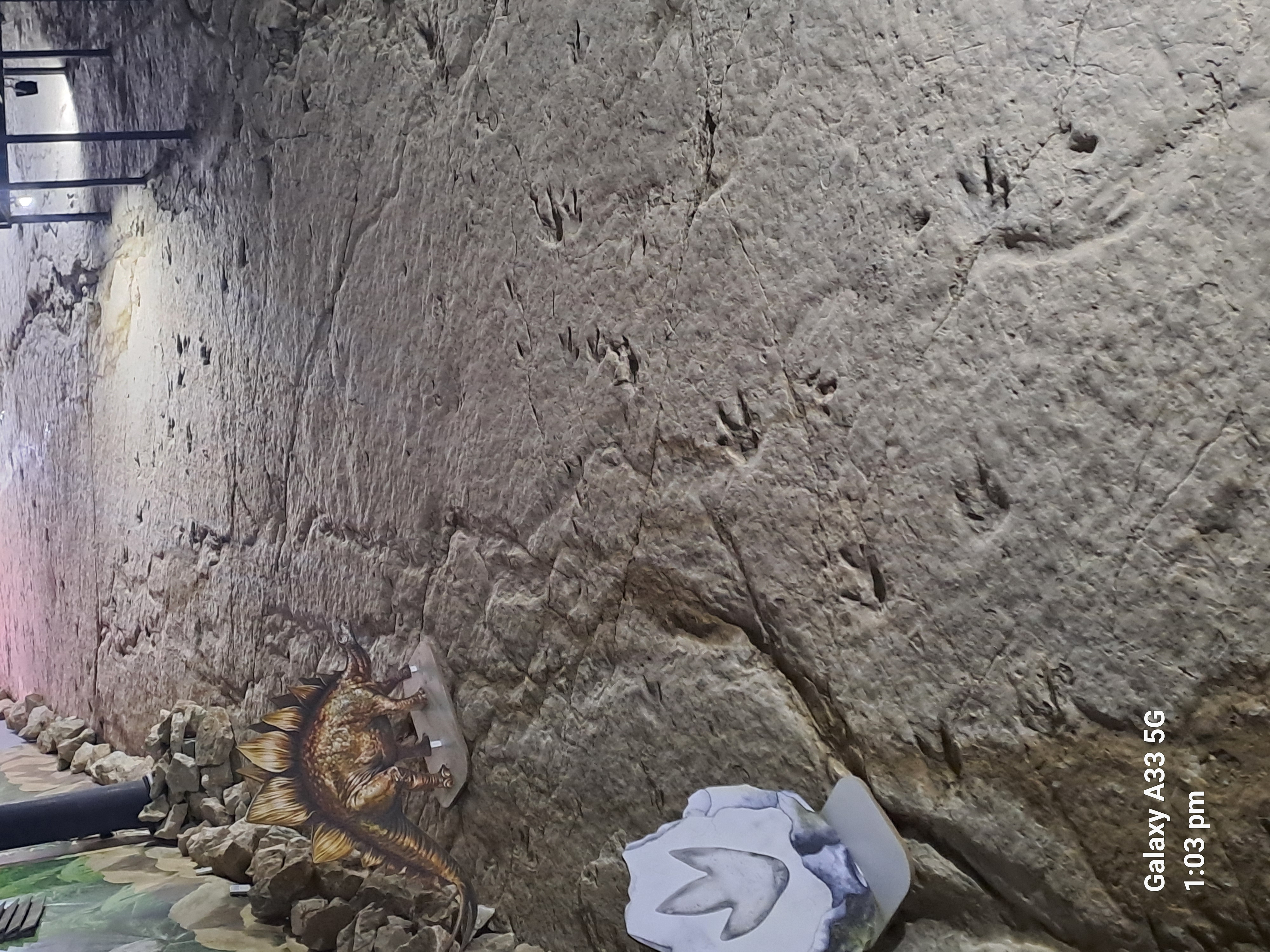
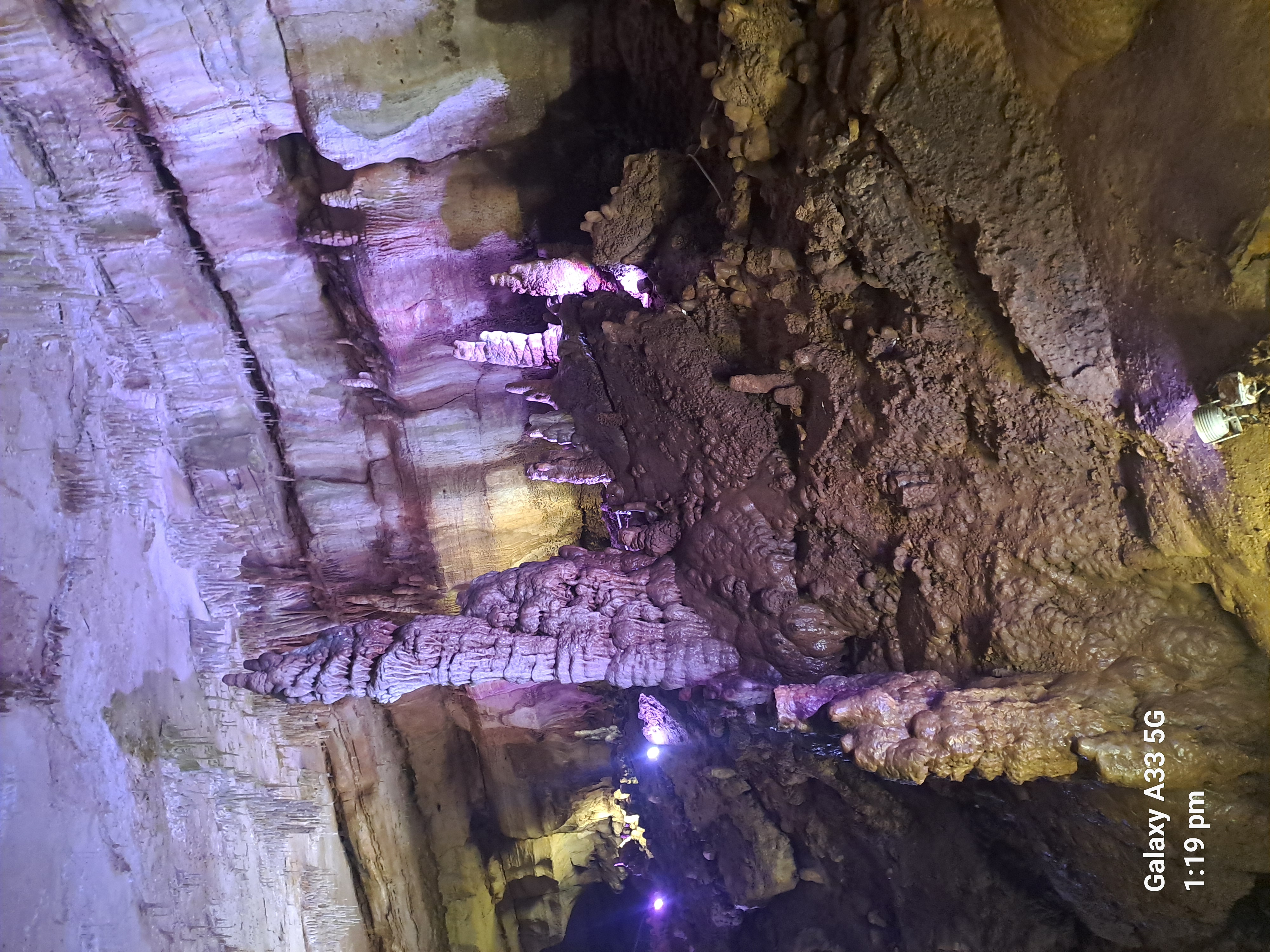
Our introduction to Georgia was a slow burn as we gradually progressed though and learnt more about the country. Our first stop was at Batumi for the night and then on to Sataplia National Park.
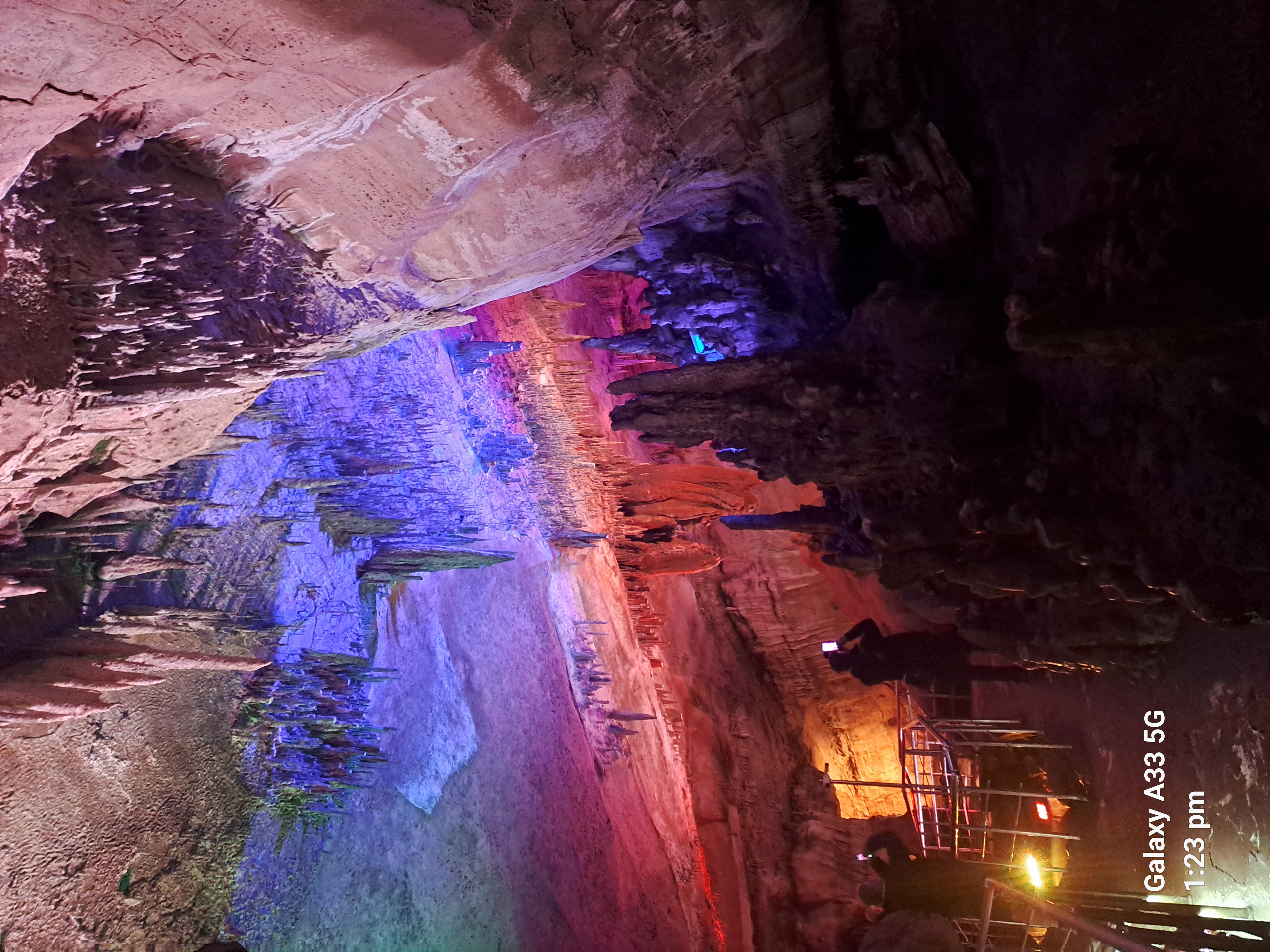
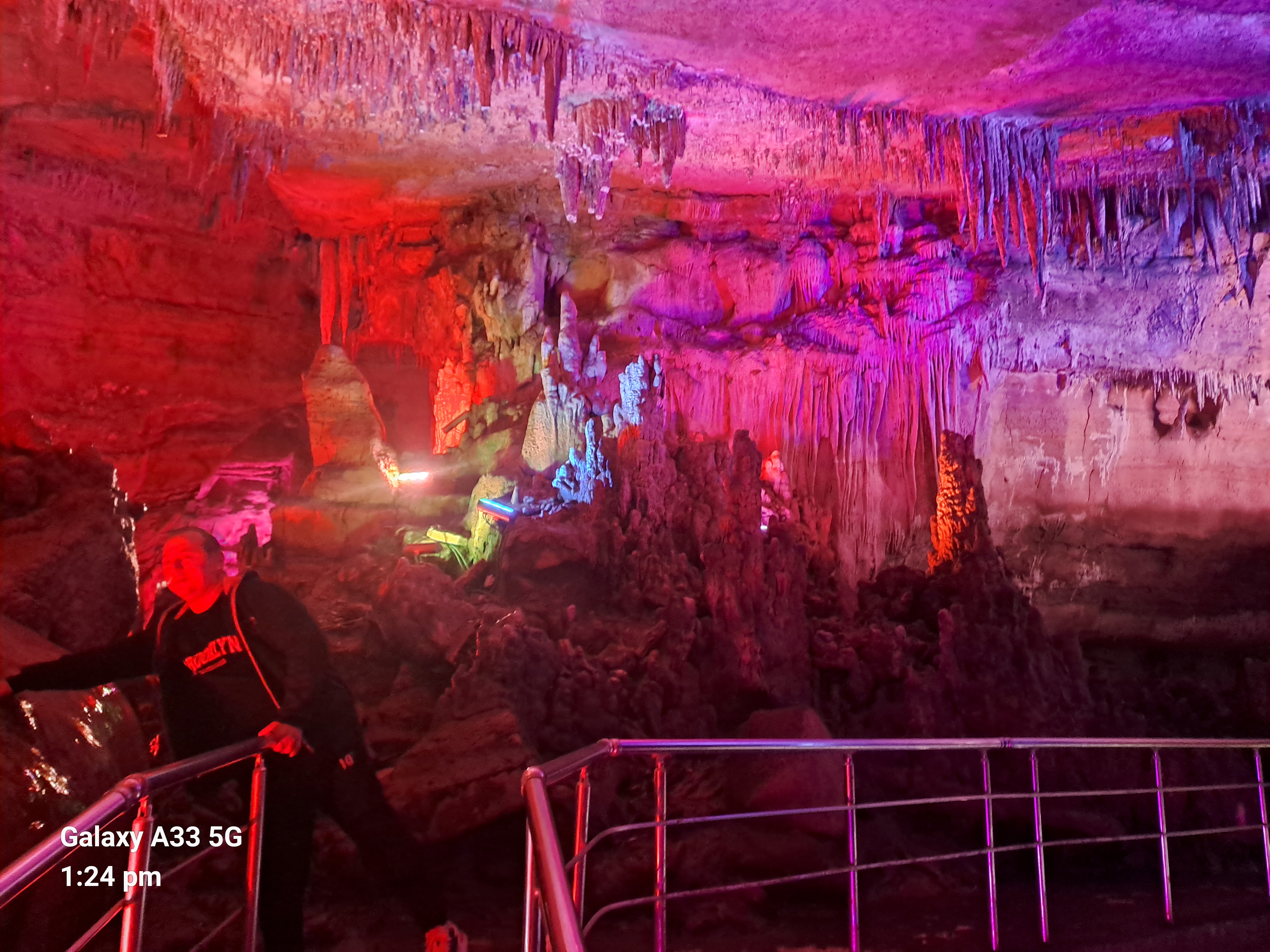
Here we started to see the beauty of Georgia. We had a combination of underground caves and dinosaur footprints and fantastic views across the country from a glass platform. We were still enjoying good weather so could make the most of the views.
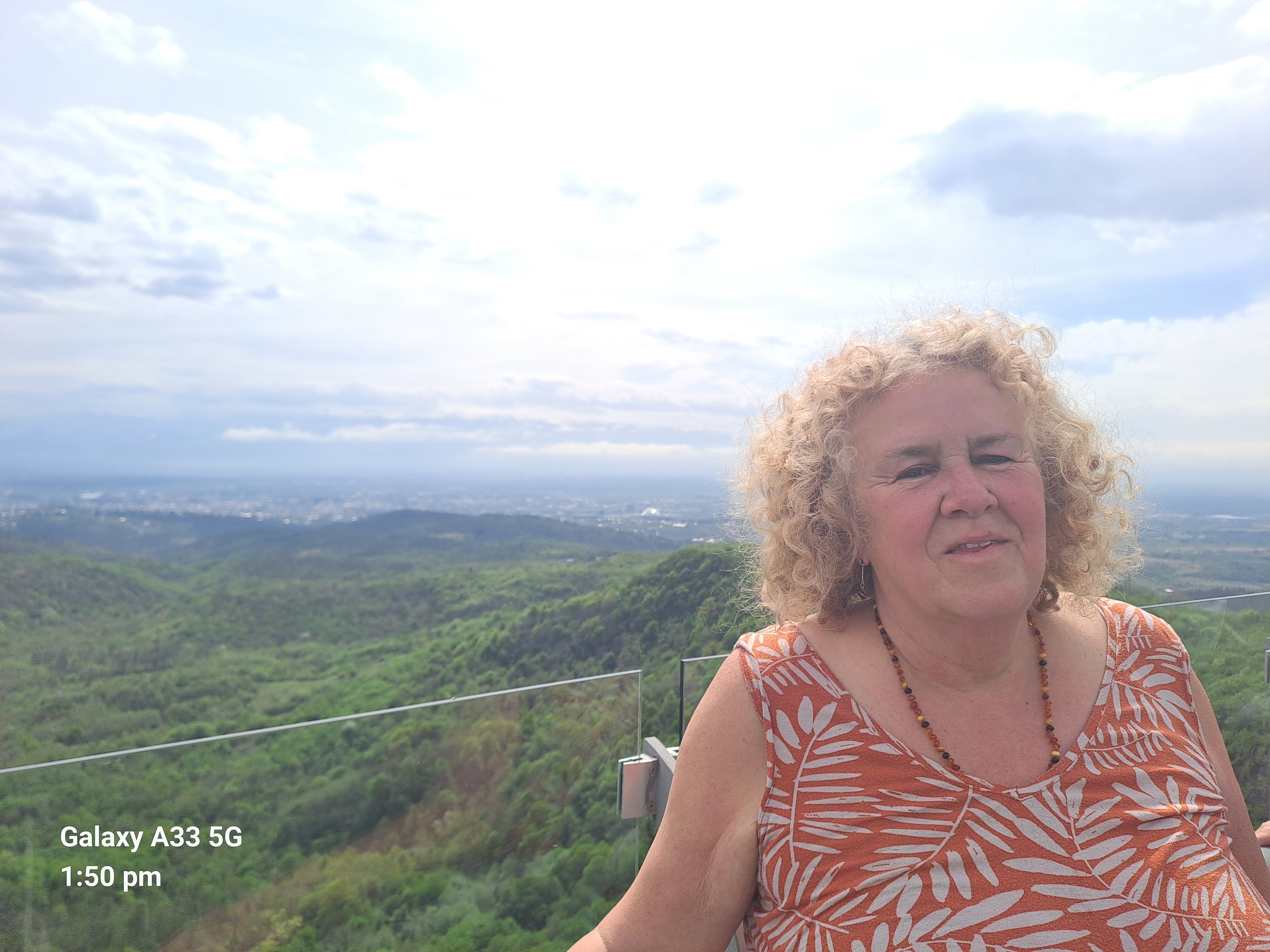
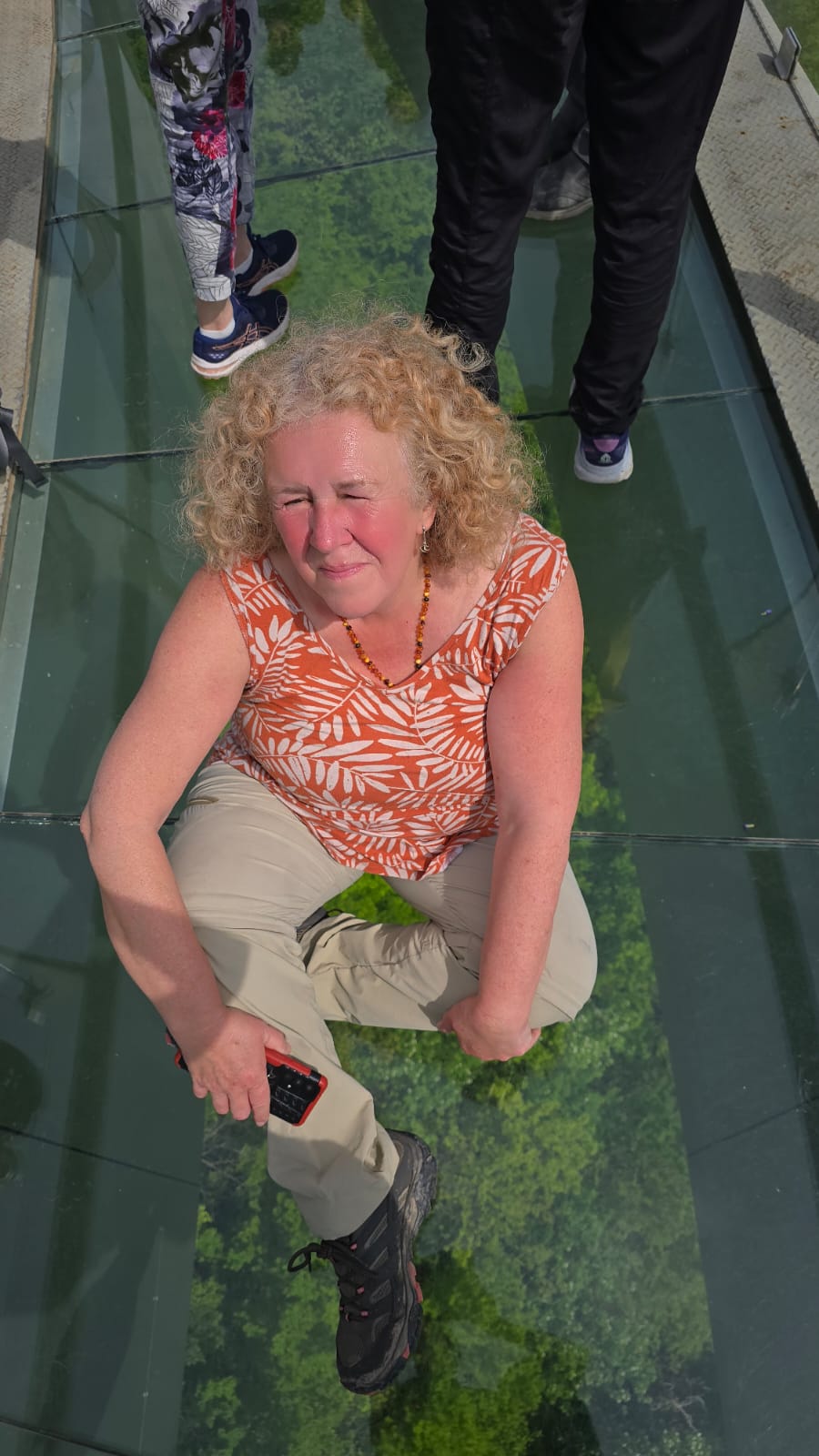
From here we went onto Kutaisi Georgia’s second city and started finding out more about the culture of Georgia. We had two nighs here which alowed us a day of sightseeing. The first priority was trying the food as we had heard so much about it. We found a lovely restaurant and were talked through the dishes and what to try. We were surprised how full two of us got on two starters.
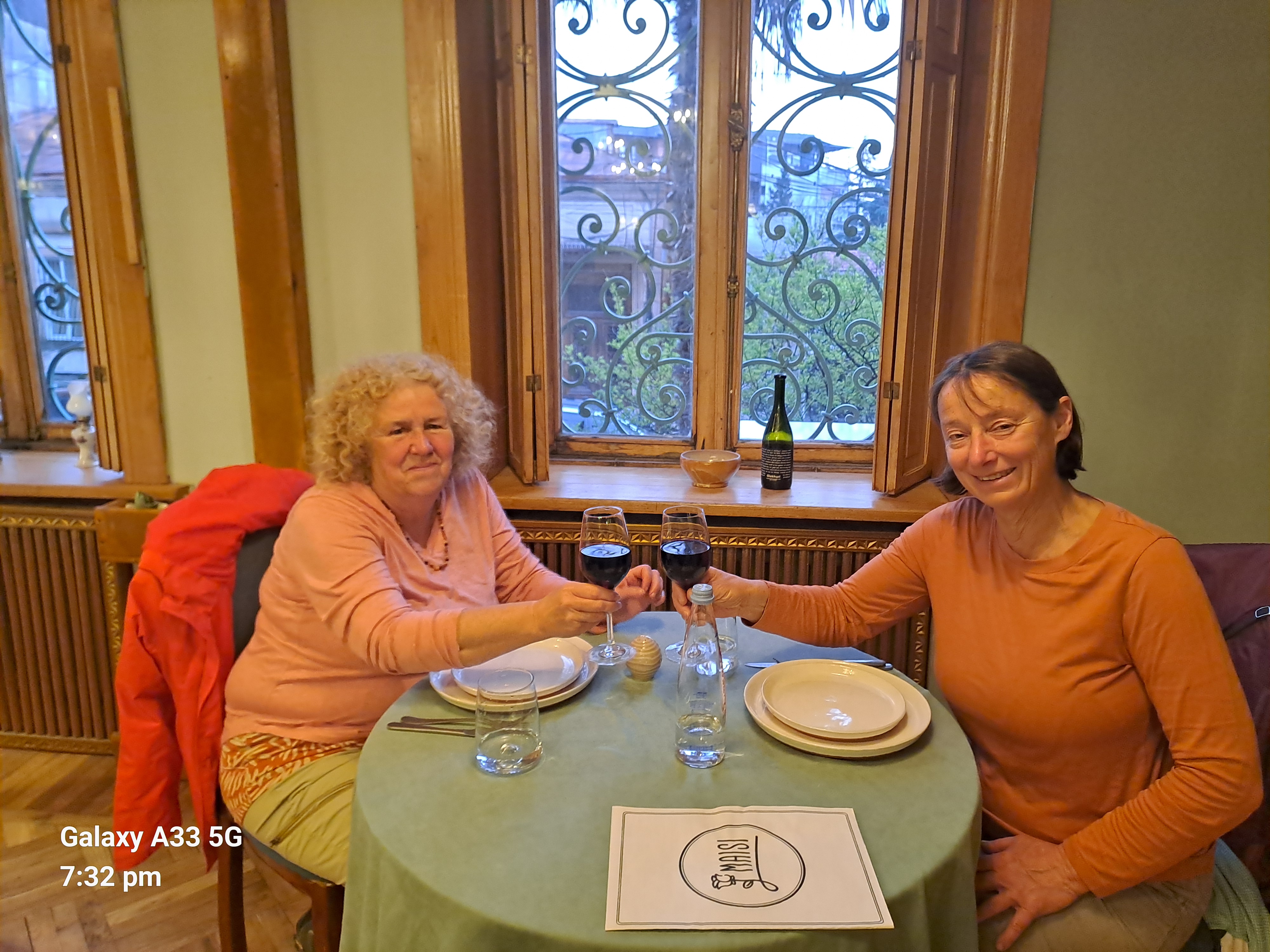
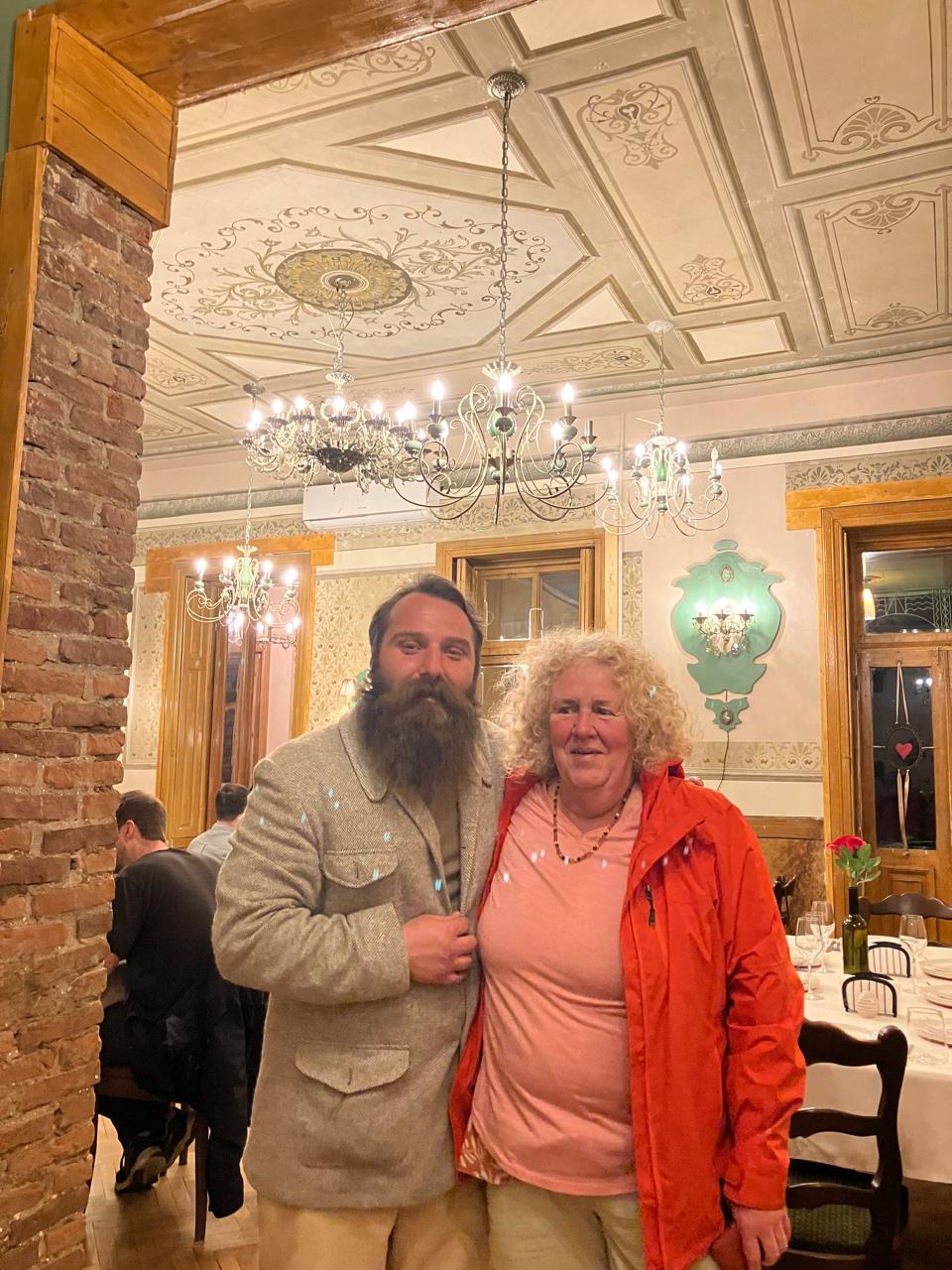
The next day there was a walking tour which started giving an insight into Georgian culture. The market has on many stalls soft drink bottles of homemade wine or chacha (spirit made from grape mash after the wine making). Also strings of nurse coated in grape syrup.
We also heard about a common theme of discontent because of ⁹the current political crisis due to flawed elections last year combined with the current party suspending preparations for EU access. This was echoed by several guides during our trip. There have been ongoing protests since the election. as for many people joining the EU is protection against further Russian annexing of their country (20% is annexed).
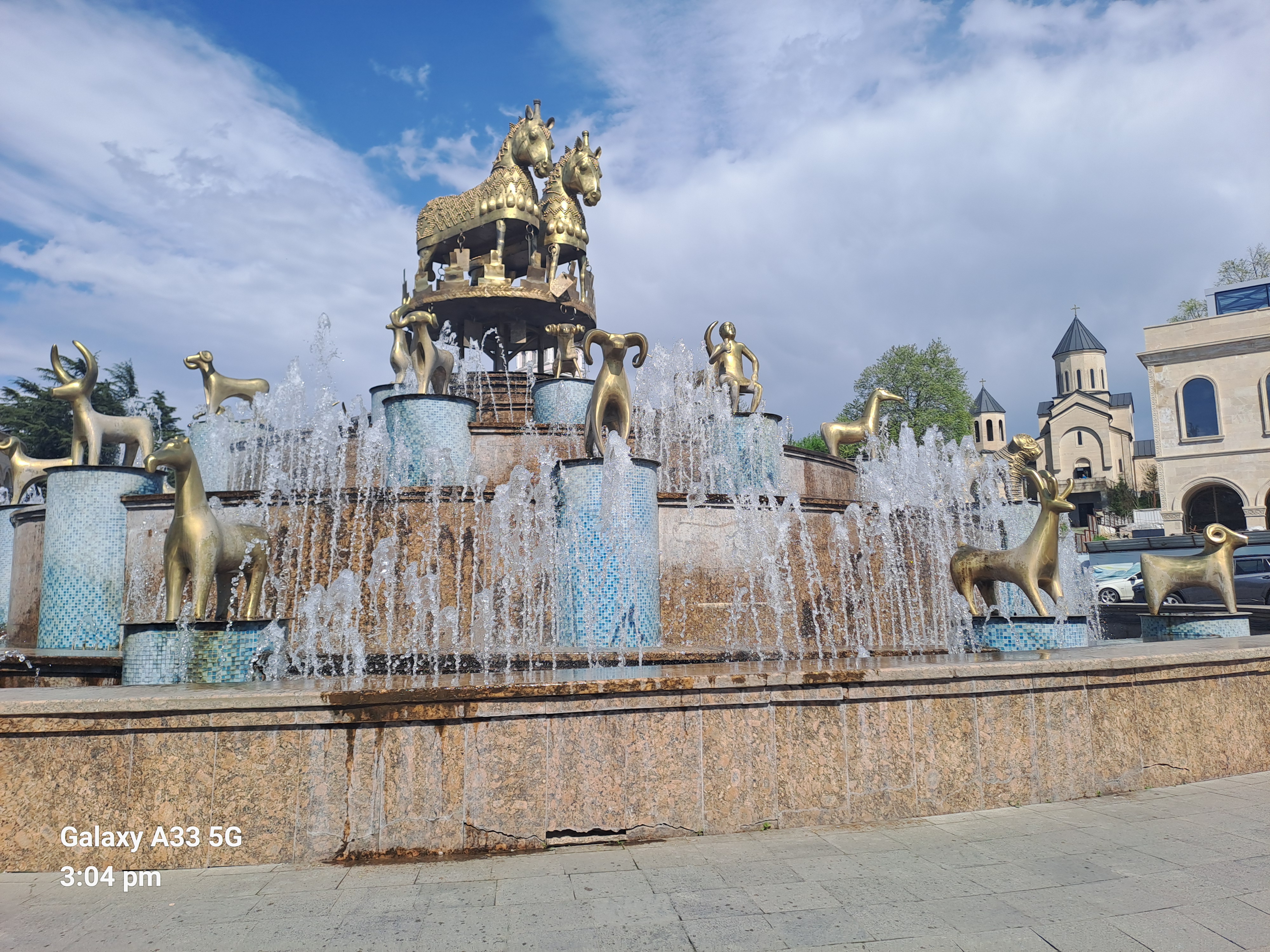
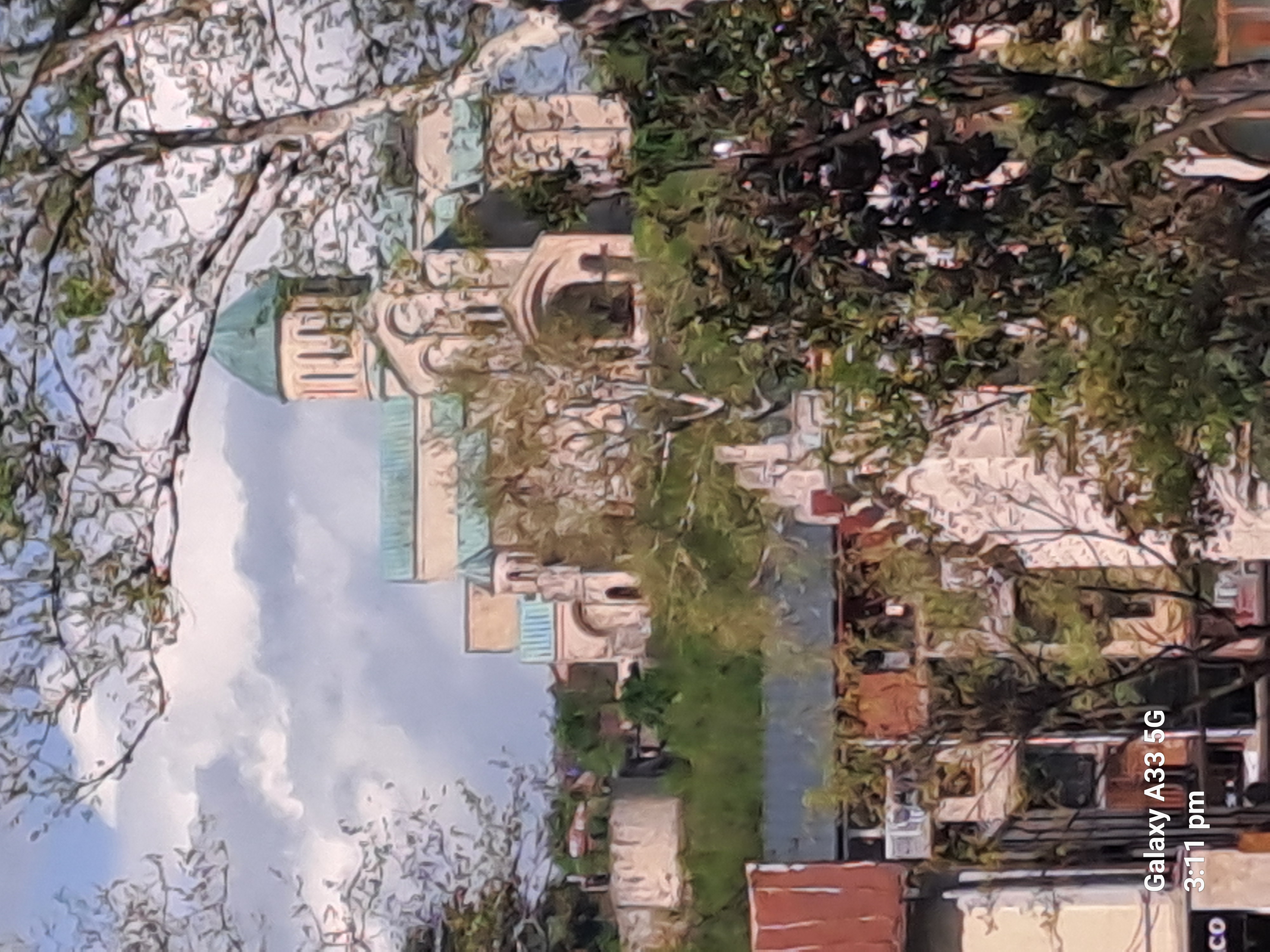
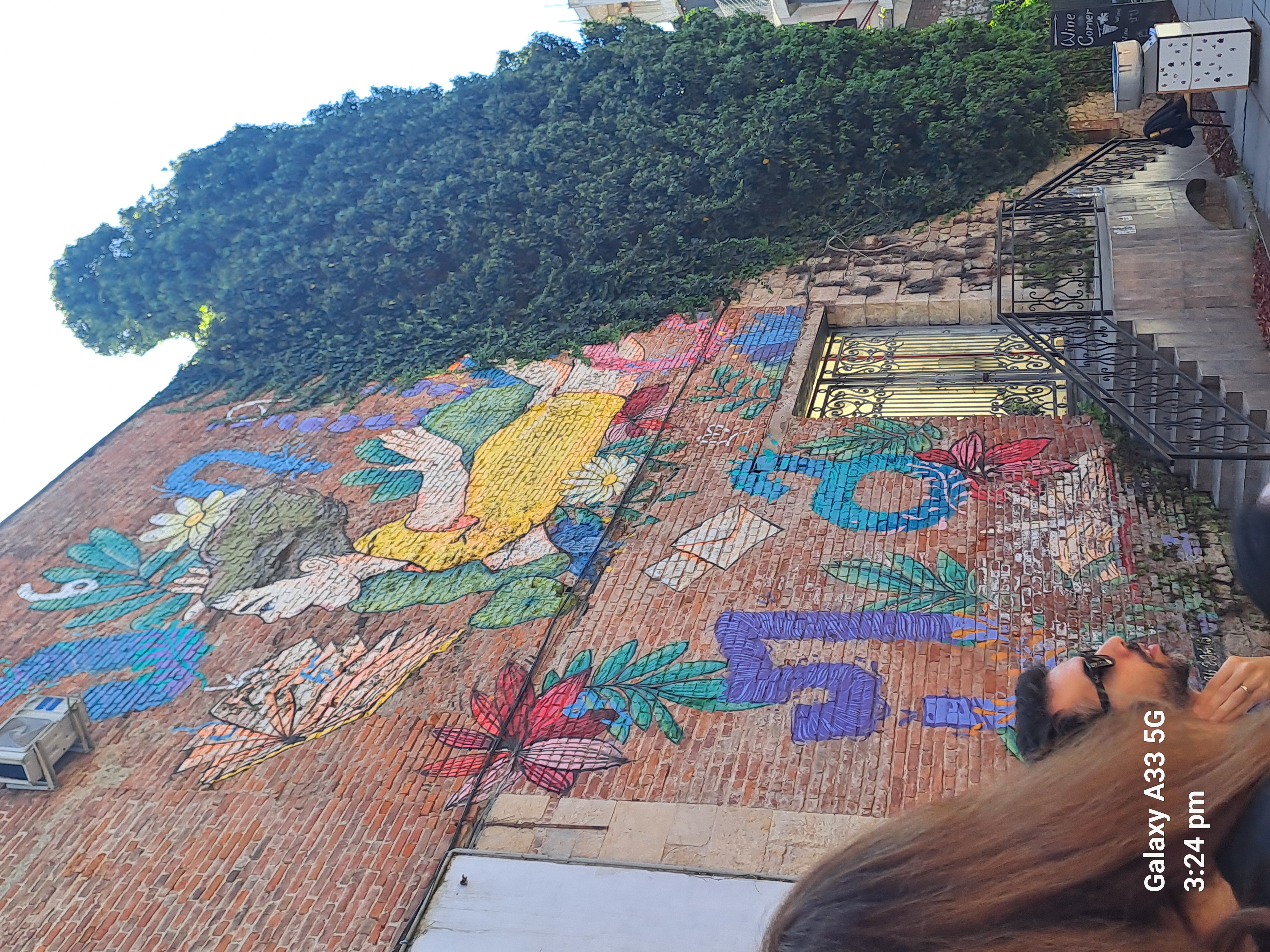
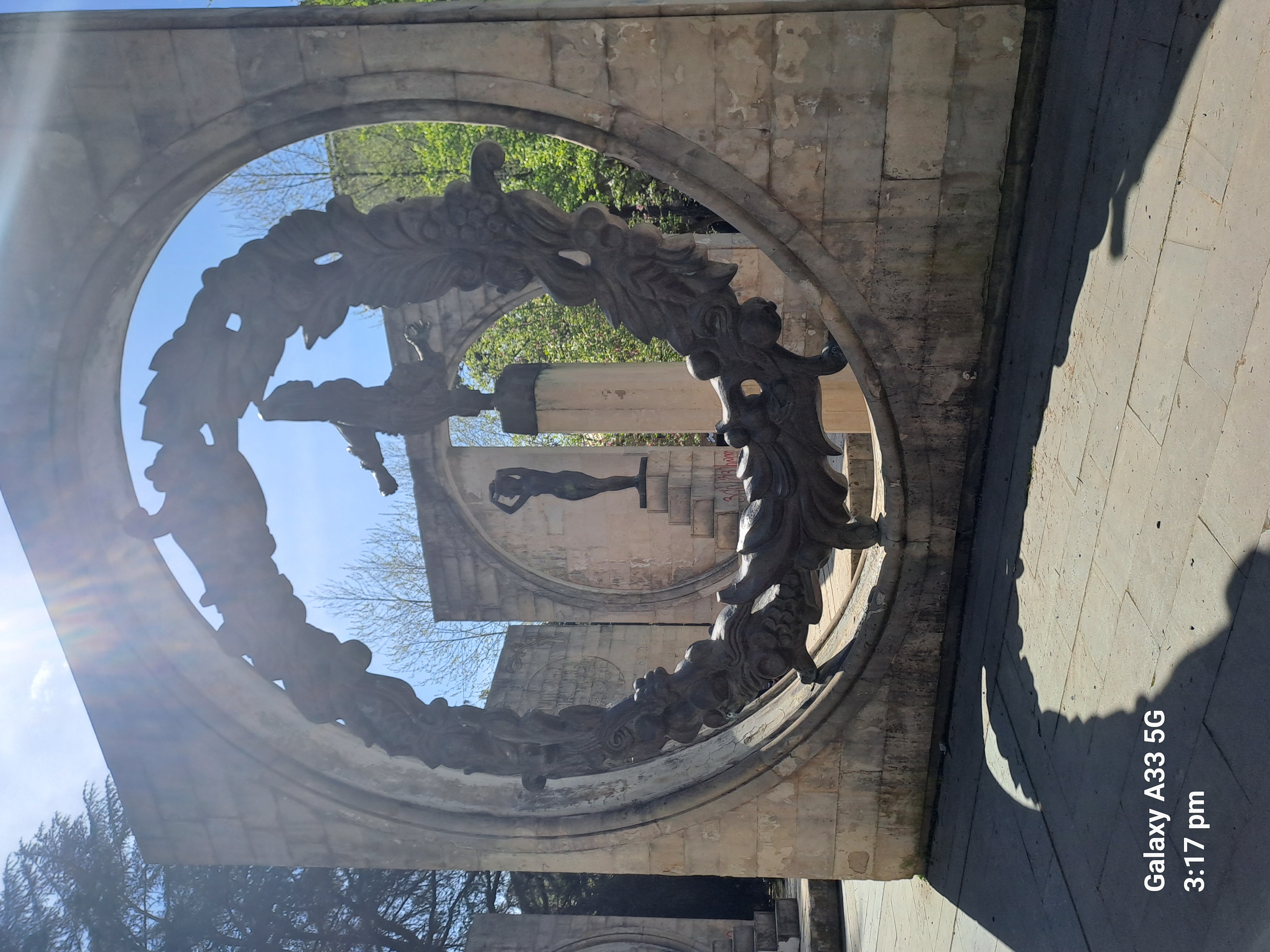
During our tour we got a sense of the pride of Georgians in their culture and what they have managed to preserve from before the Soviet era. The civil war after independence in 1991/3 is still fresh in people’s minds as is the war of 2008 when Russia took over two regions of Georgia. Family deaths are still in the current generations. The current crisis is still very much a battle between pro Russia and Pro EU groups.
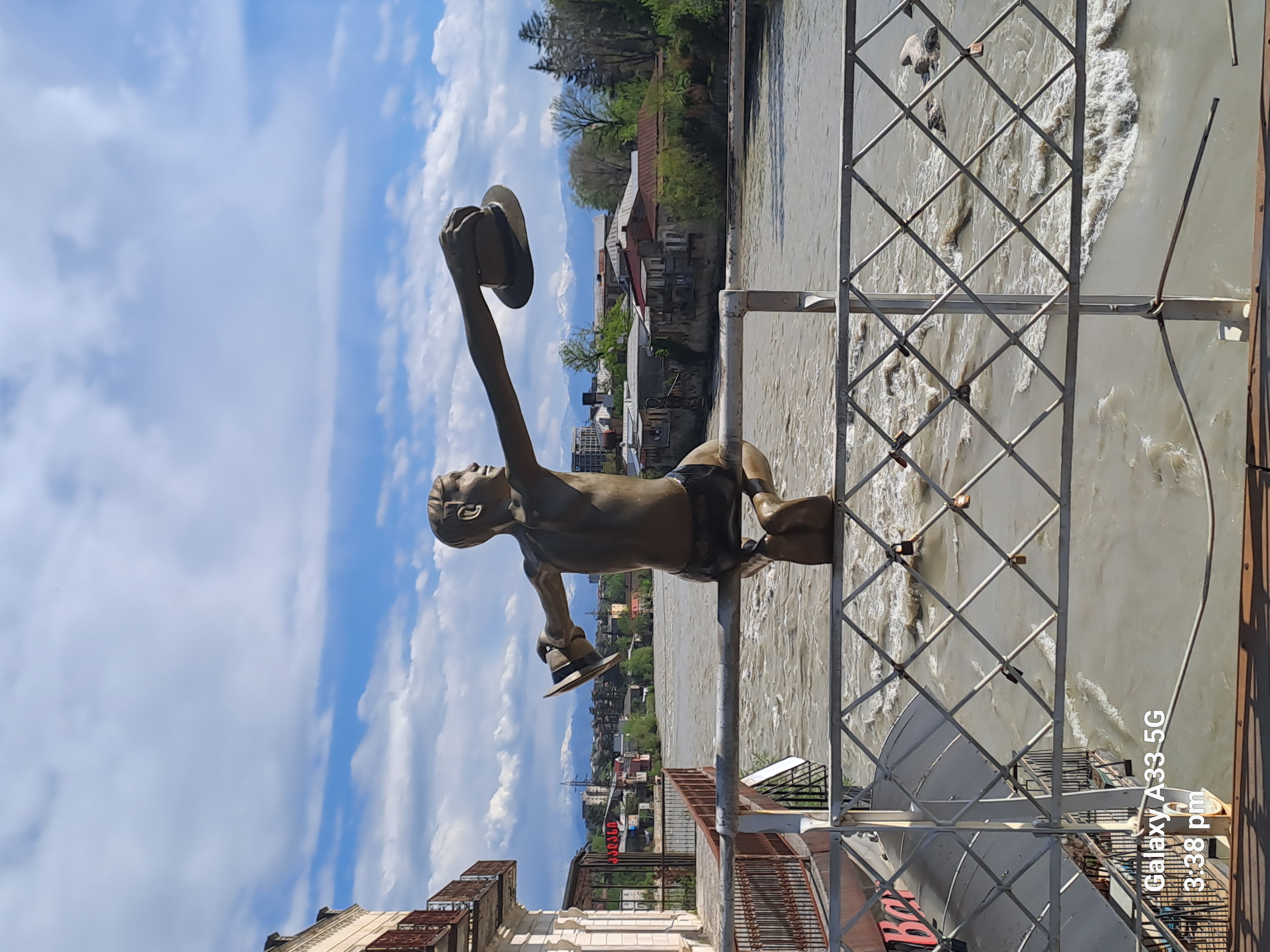
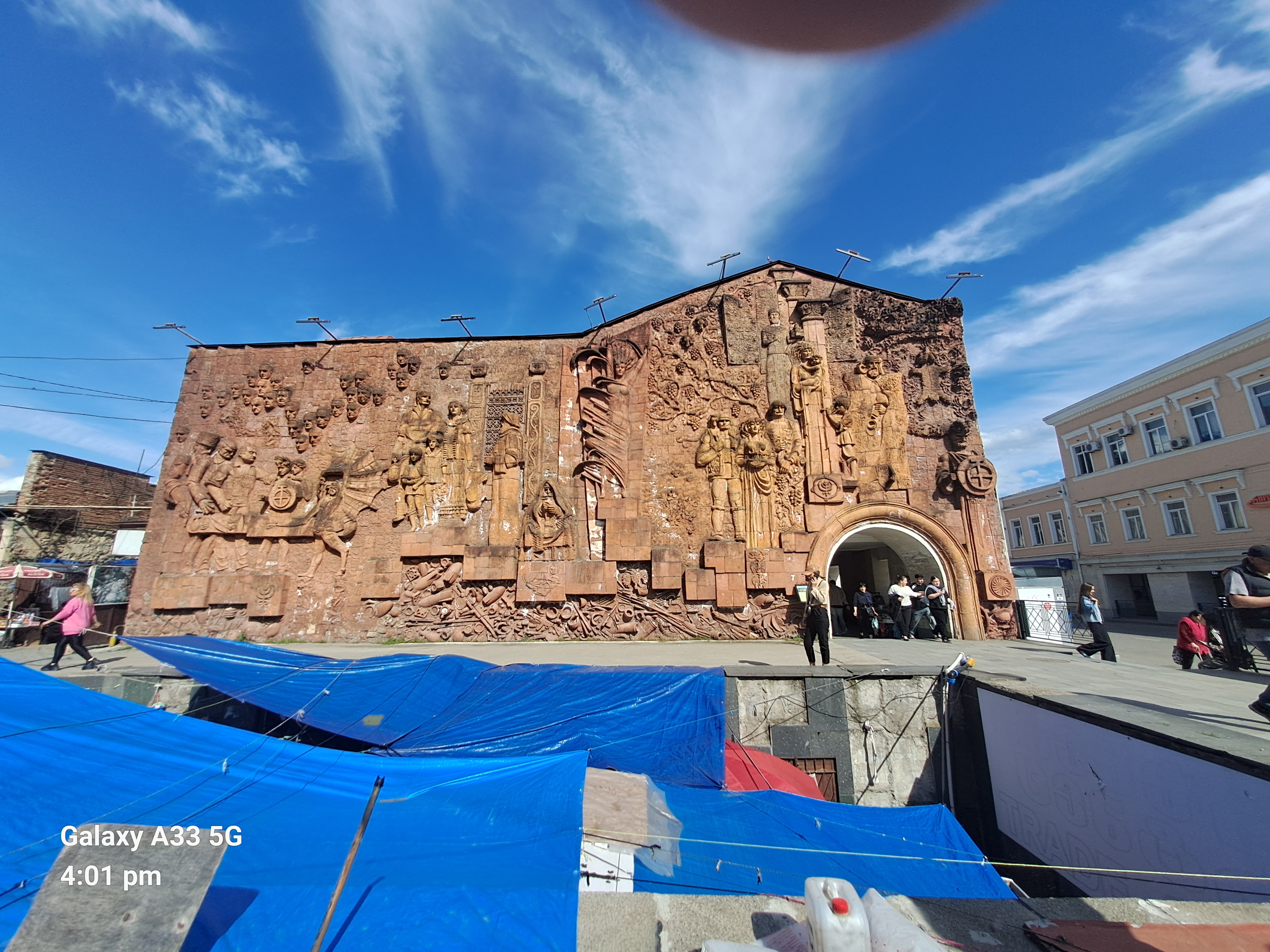
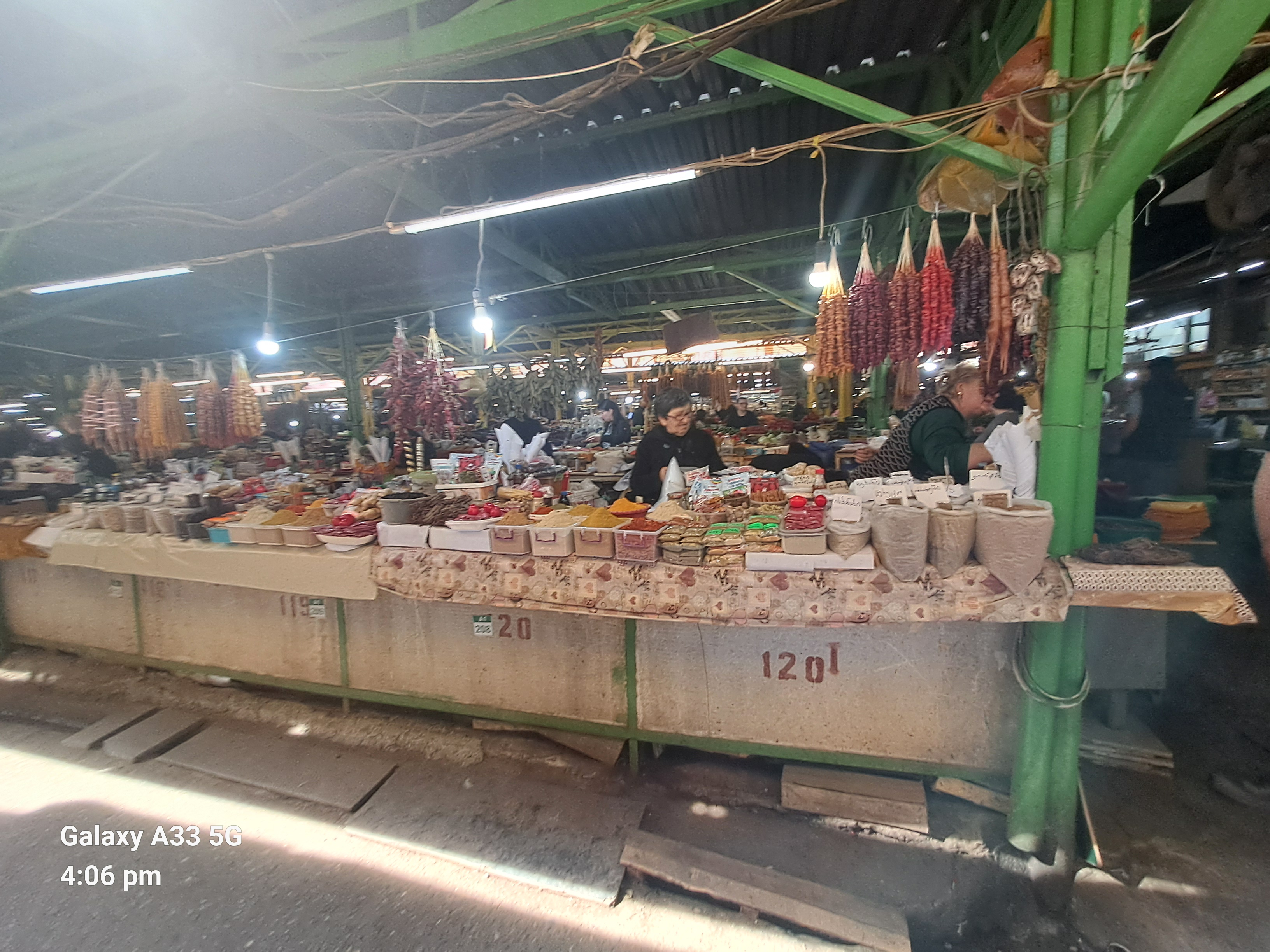
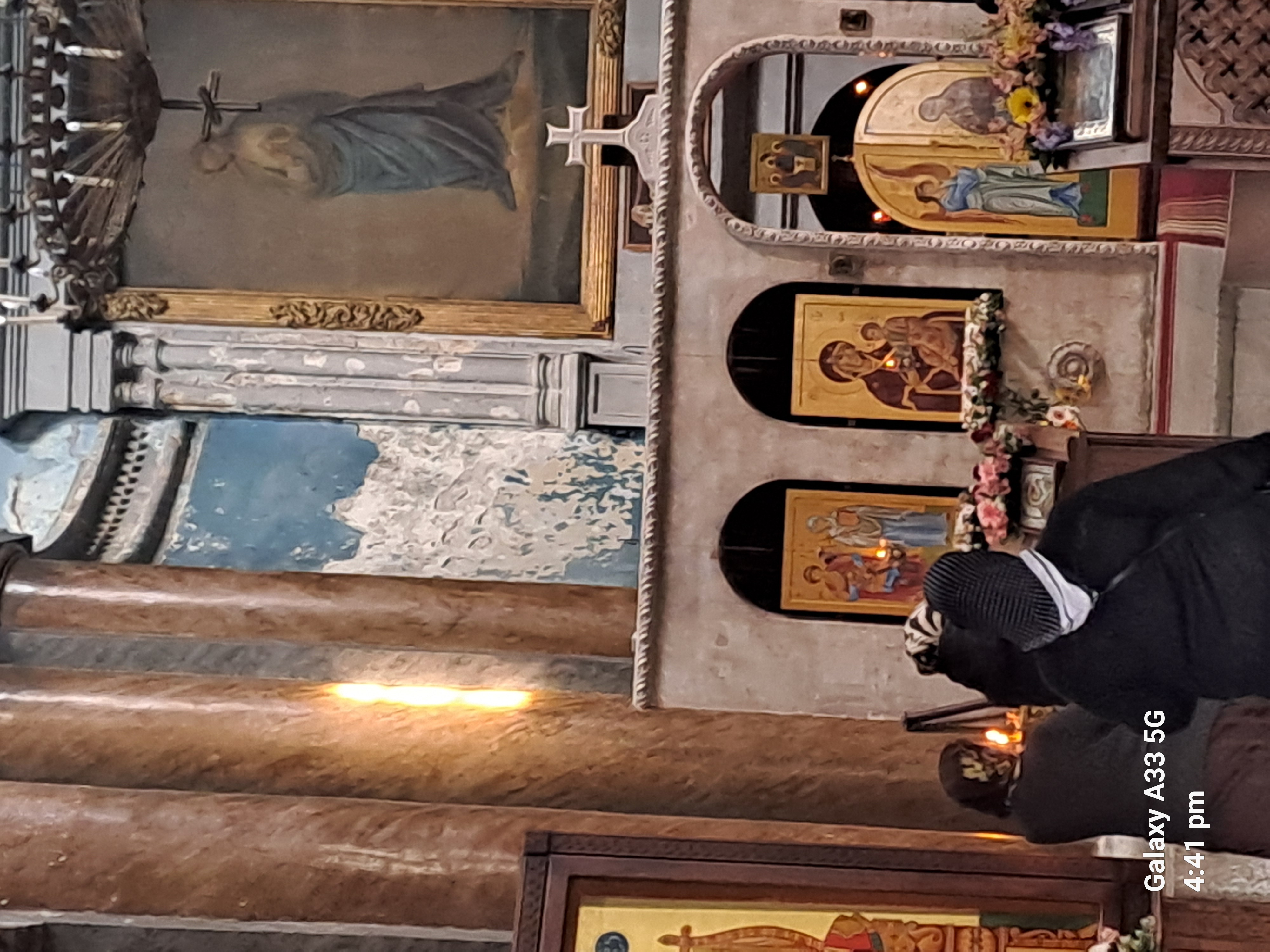
Georgia is a very religious country and this is something that is a matter of pride after the Soviet years and a theme of independence that religion is allowed. Being able to practice their faith is seen as a privilege to be treasured. The main faith of Georgia is Orthodox Christianity and we went into a service in Kutaisi.
The other important aspect of Georgian culture is wine! It used to be that every family had their own Qververi buried in the ground to ferment wine. This probably accounts for the amount of homemade wine on sale . The wine culture is very much celebrated in Georgia. They are very proud of their grape varieties and mourn those lost during the Soviet era.
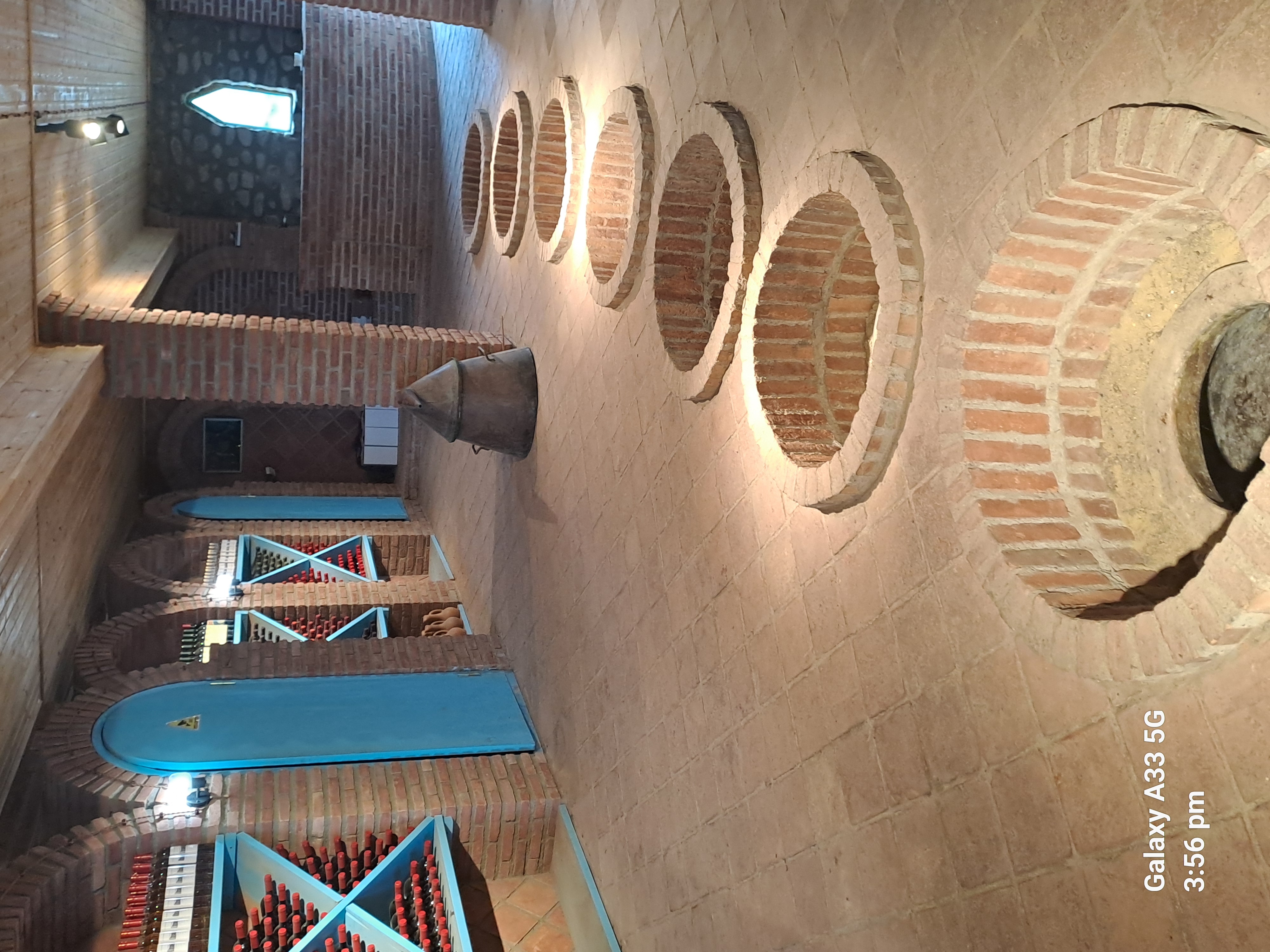
The buildings and art are a mixture of Soviet and post Soviet as built in Soviet art is difficult to remove. We saw a commissioned portrait of a Georgian woman making dough. Dough is always kept on hand in case of guests “a guest is a gift from God”.
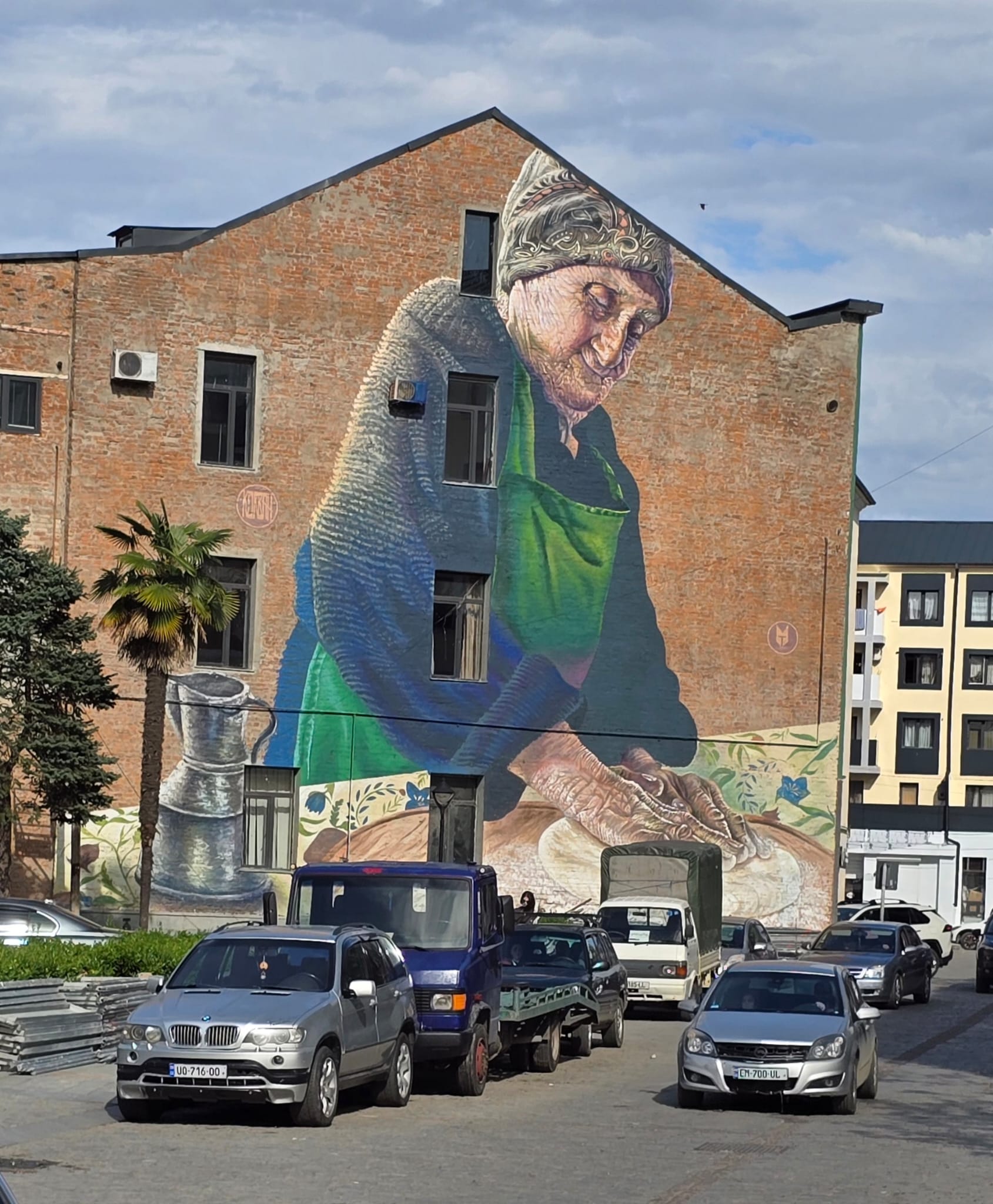
On our way up to Kazbargi in the mountains we stopped at the Stalin Museum. I think this highlights the mixed political culture of Georgia. The lower floor in Georgian and English drew attention to the atrocities of Stalin. The upper floor in Georgian no English appears to venerate Stalin. The museum was seen as an embarrassment to Georgians I talked to,
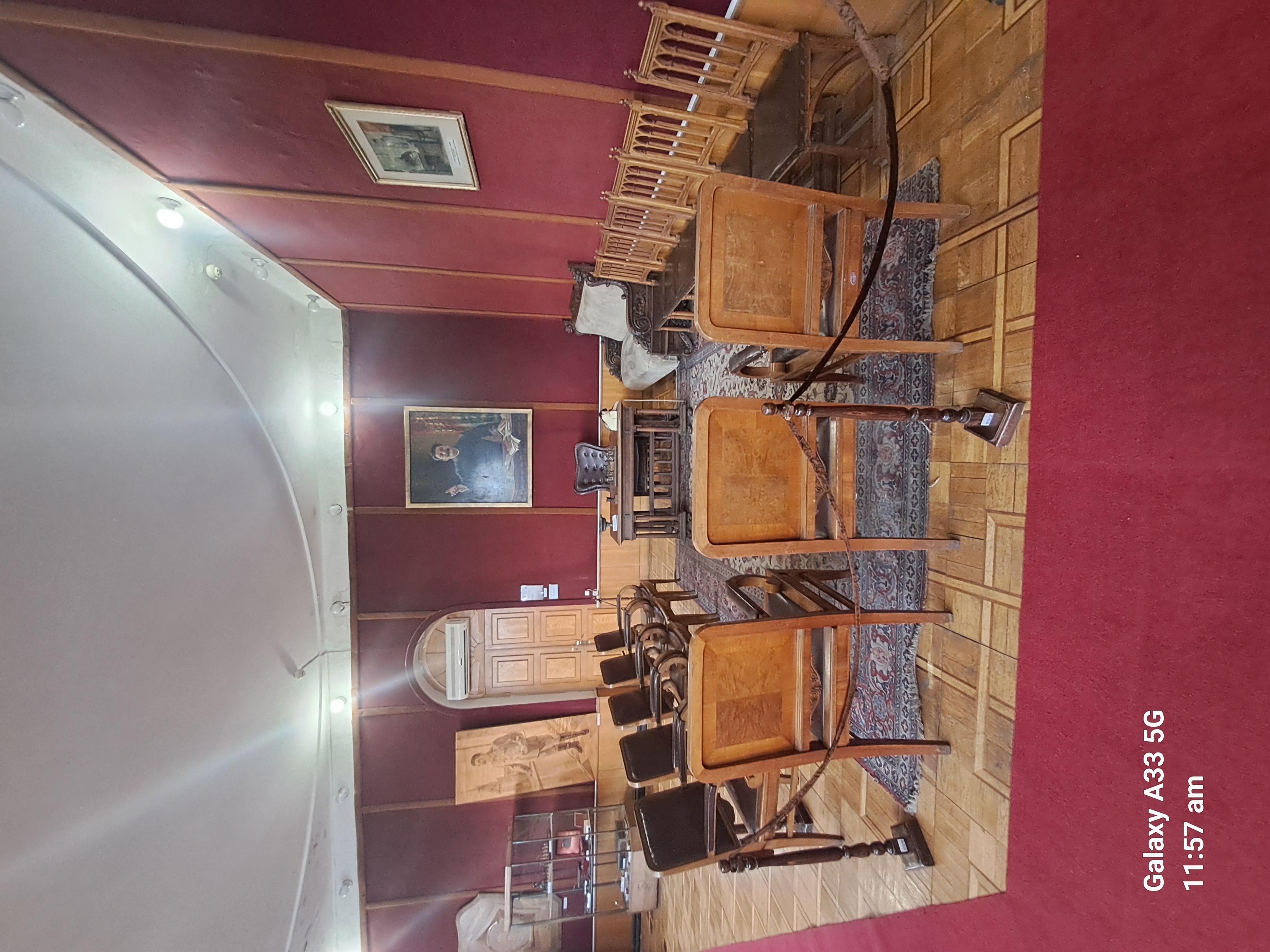
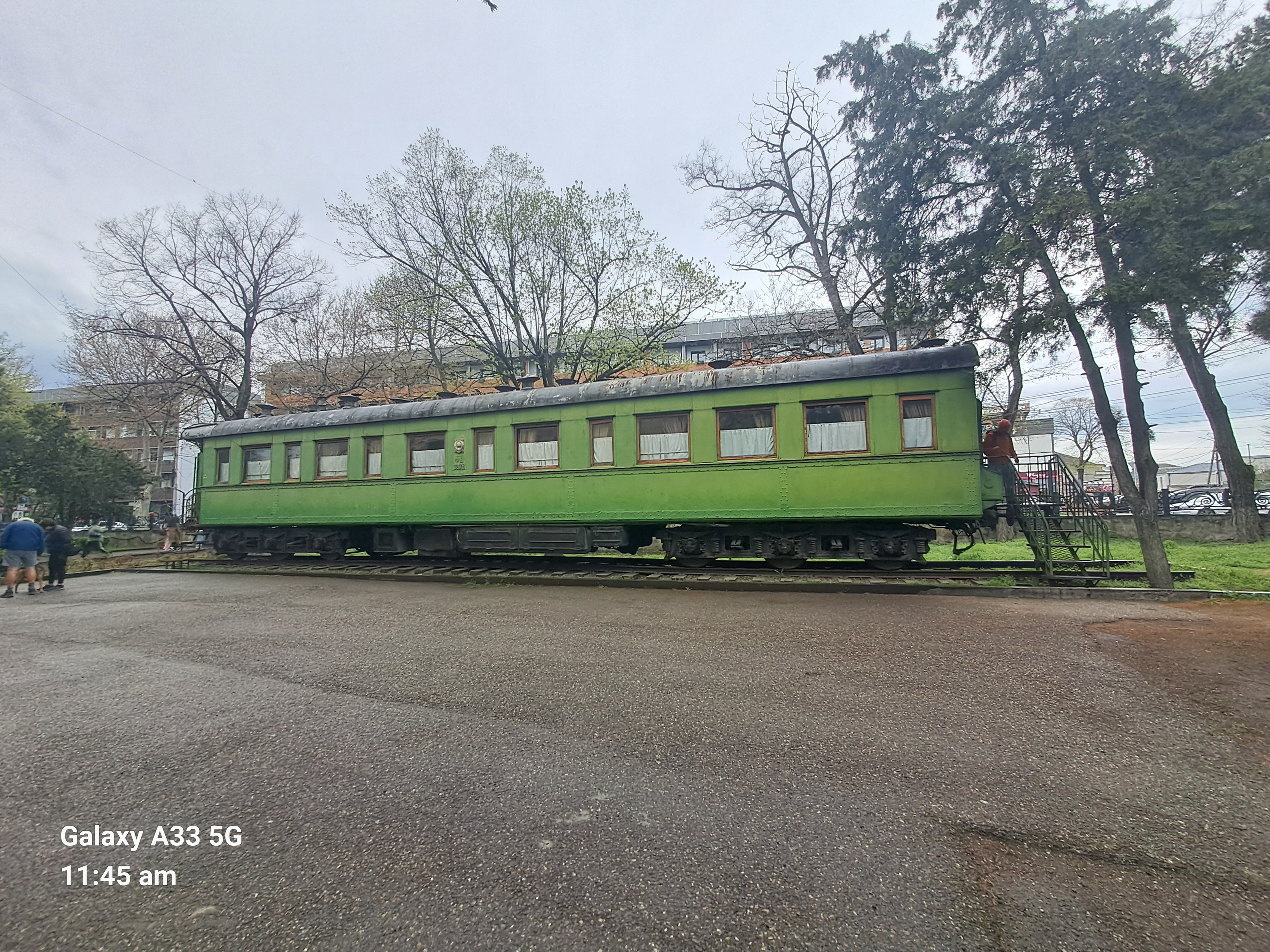
We were meant to visit Kasbegi for two nights of bush camping. However our visit coincided with a downturn in the weather and a progression of the lurgy to chesty coughs and colds. We all booked hotel accommodation for this period as we couldn’t face cold nights while feeling ill.
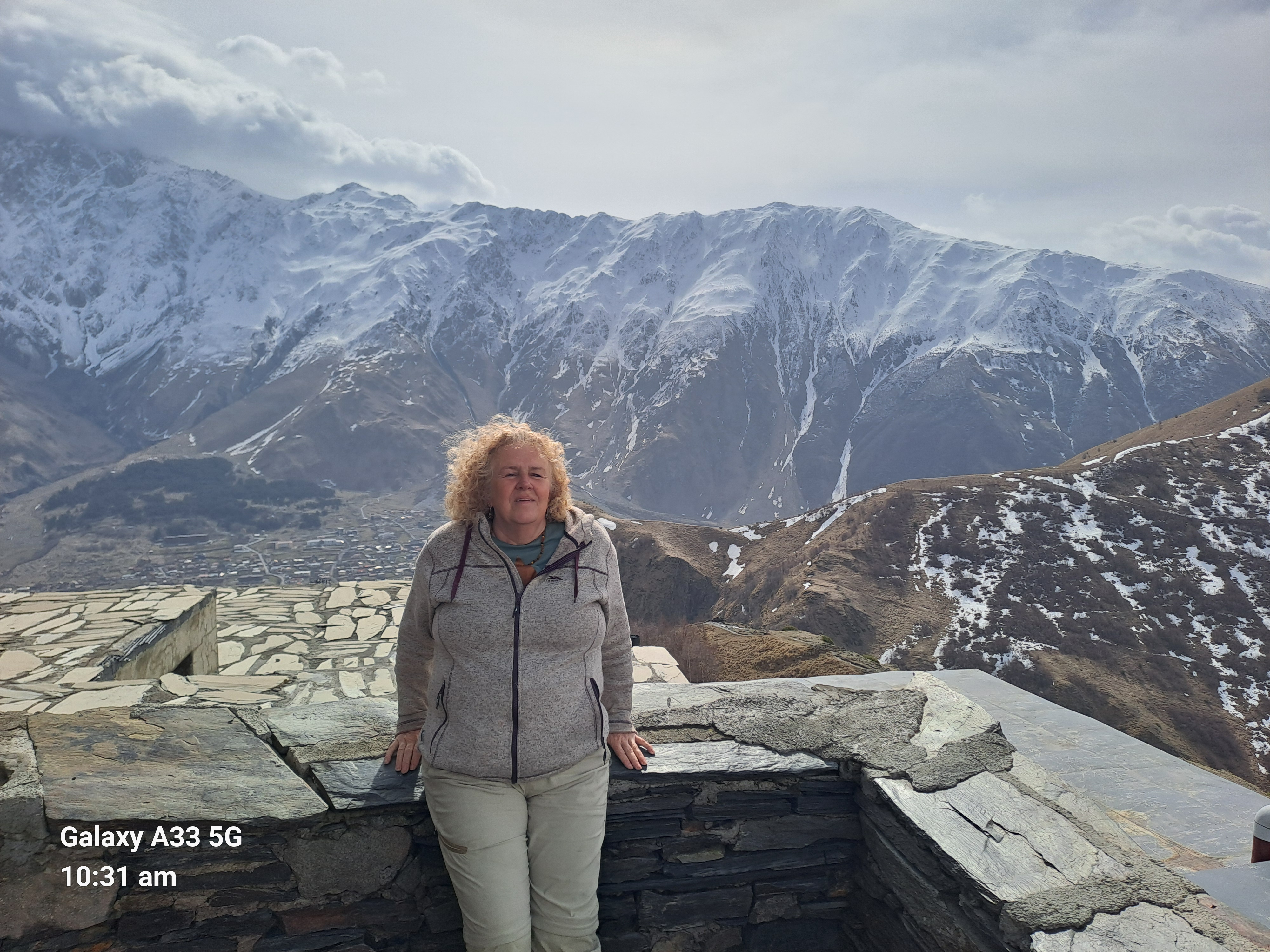
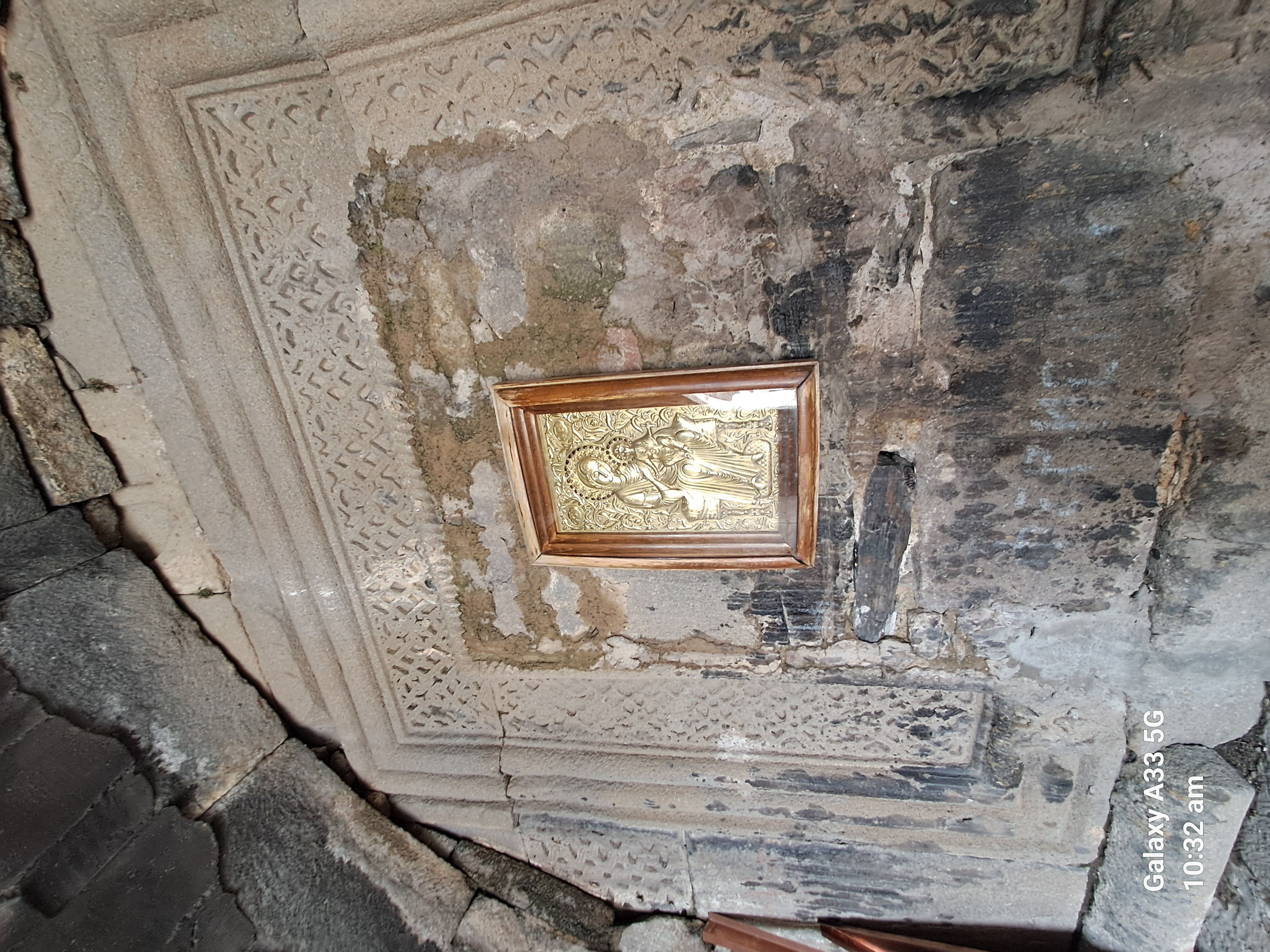
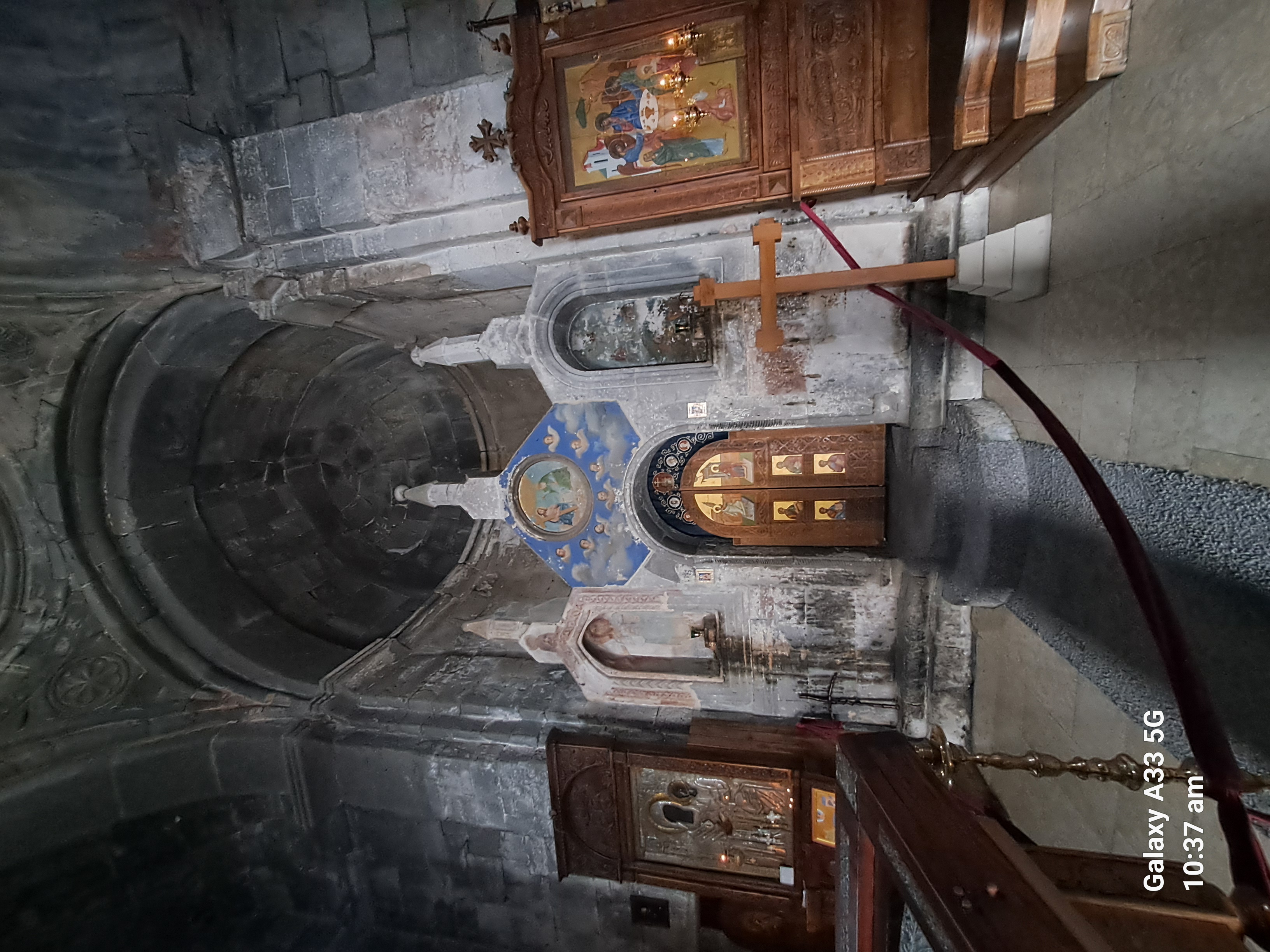
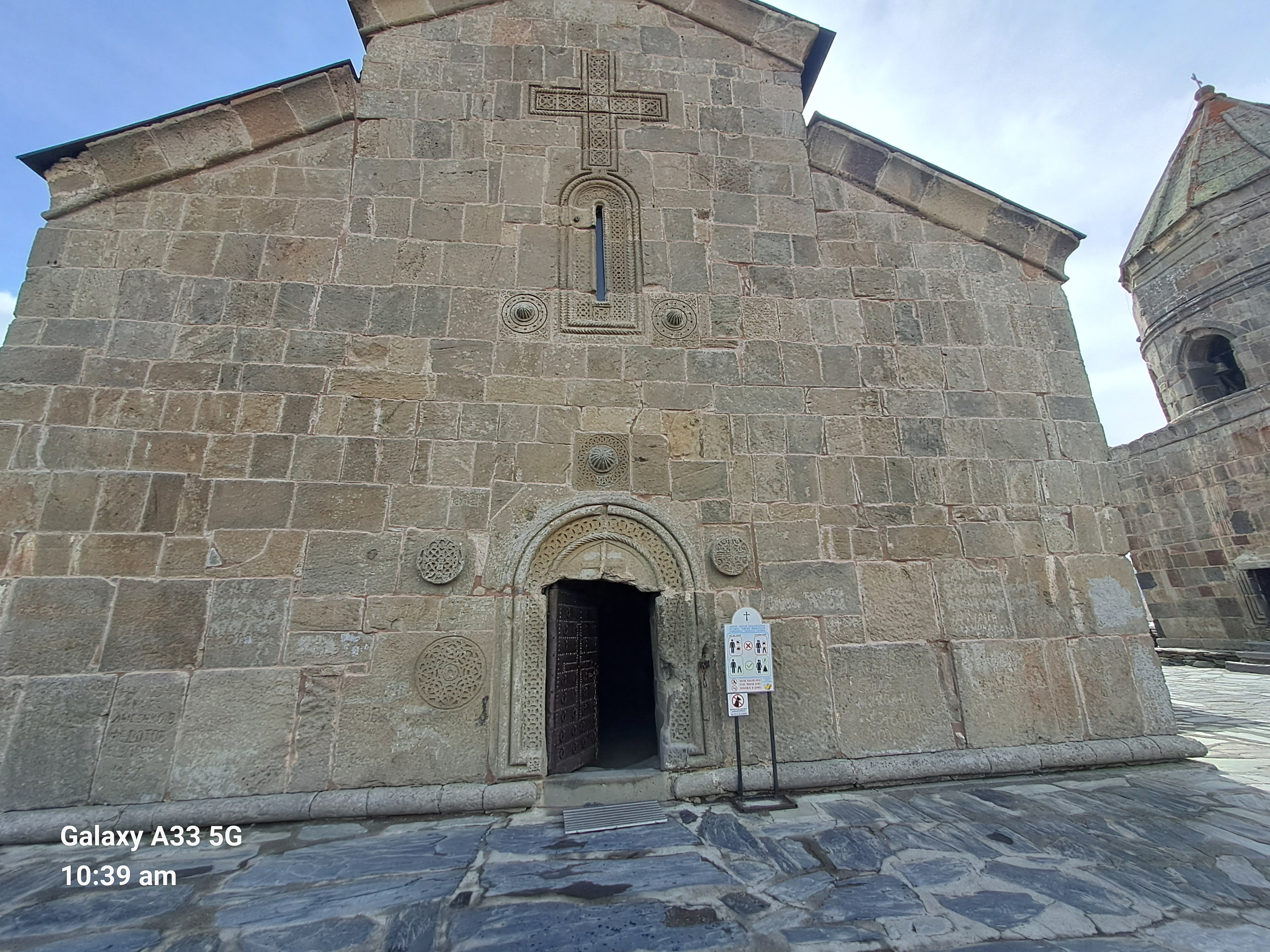

Some of us walked up to the church to see it and the views, some of got taxis as all our puff had gone. Here us women found we didn’t just have to cover our head but wear skirts to enter the church and we could tie “aprons” around us to do this – I don’t suppose many tourists walk up in skirts.
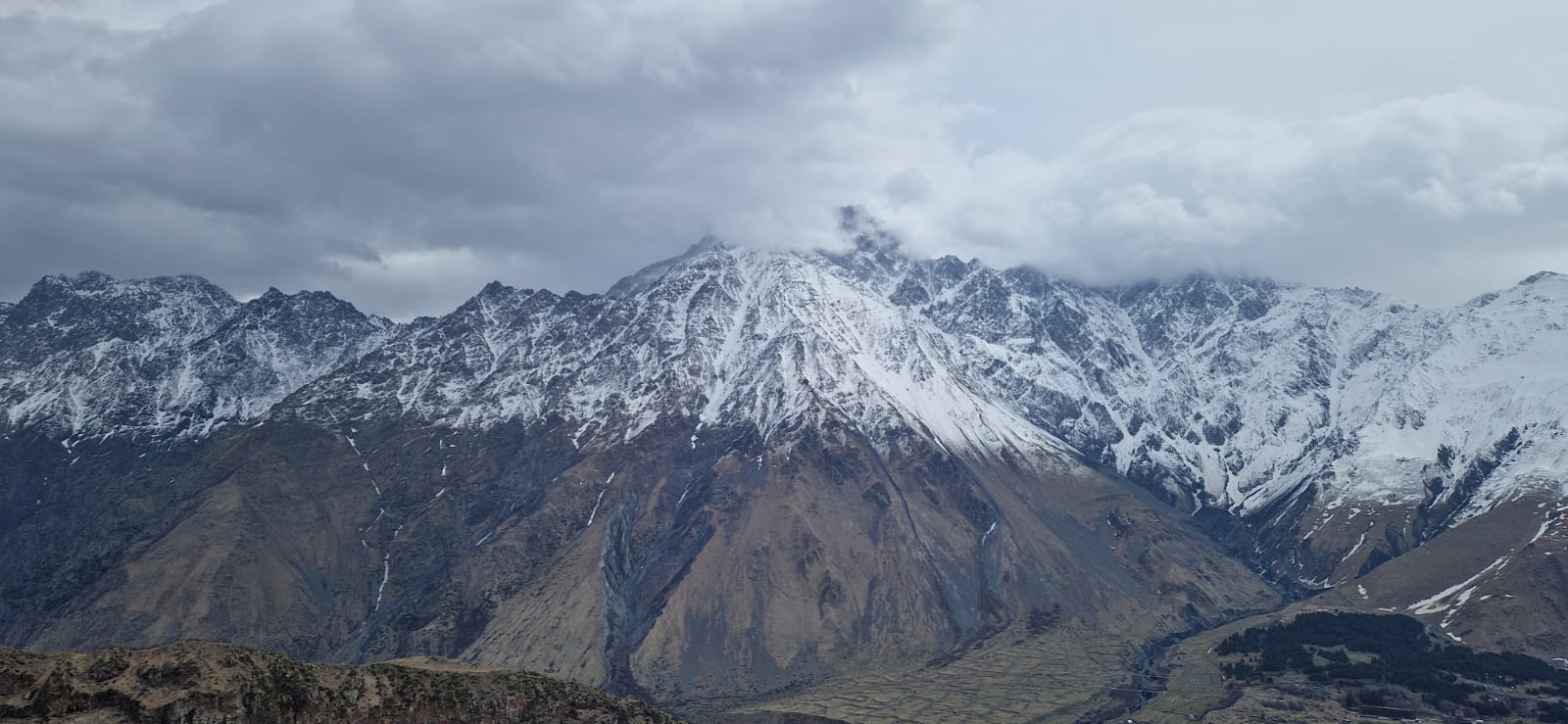
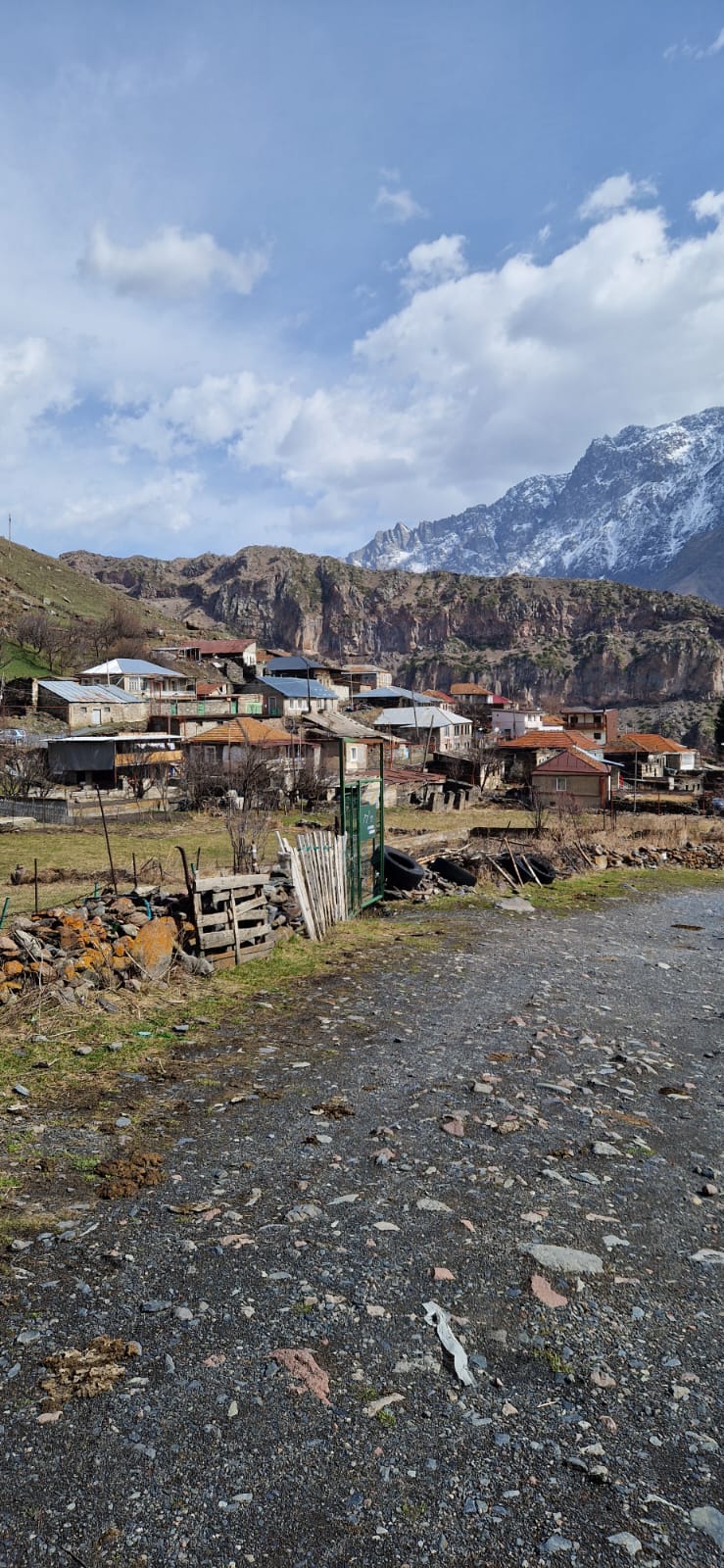
Things started going wrong just after we left the next morning. Our leader got a call to say the road was closed due to an avalanche. This was confirmed when we got to the police checkpoint so we had to go back. No other road out without going through Russia.
This time a group of us went to a hostel and we enjoyed a night of Georgian hospitality there. I stayed off the chacha. I didn’t trust it. The next day we anxiously awaited news that the road was open. Meanwhile the weather worsened and we had heavy snow. It did eventually open to cars but was so unsafe due to ice that a Polish couple that left came back again.
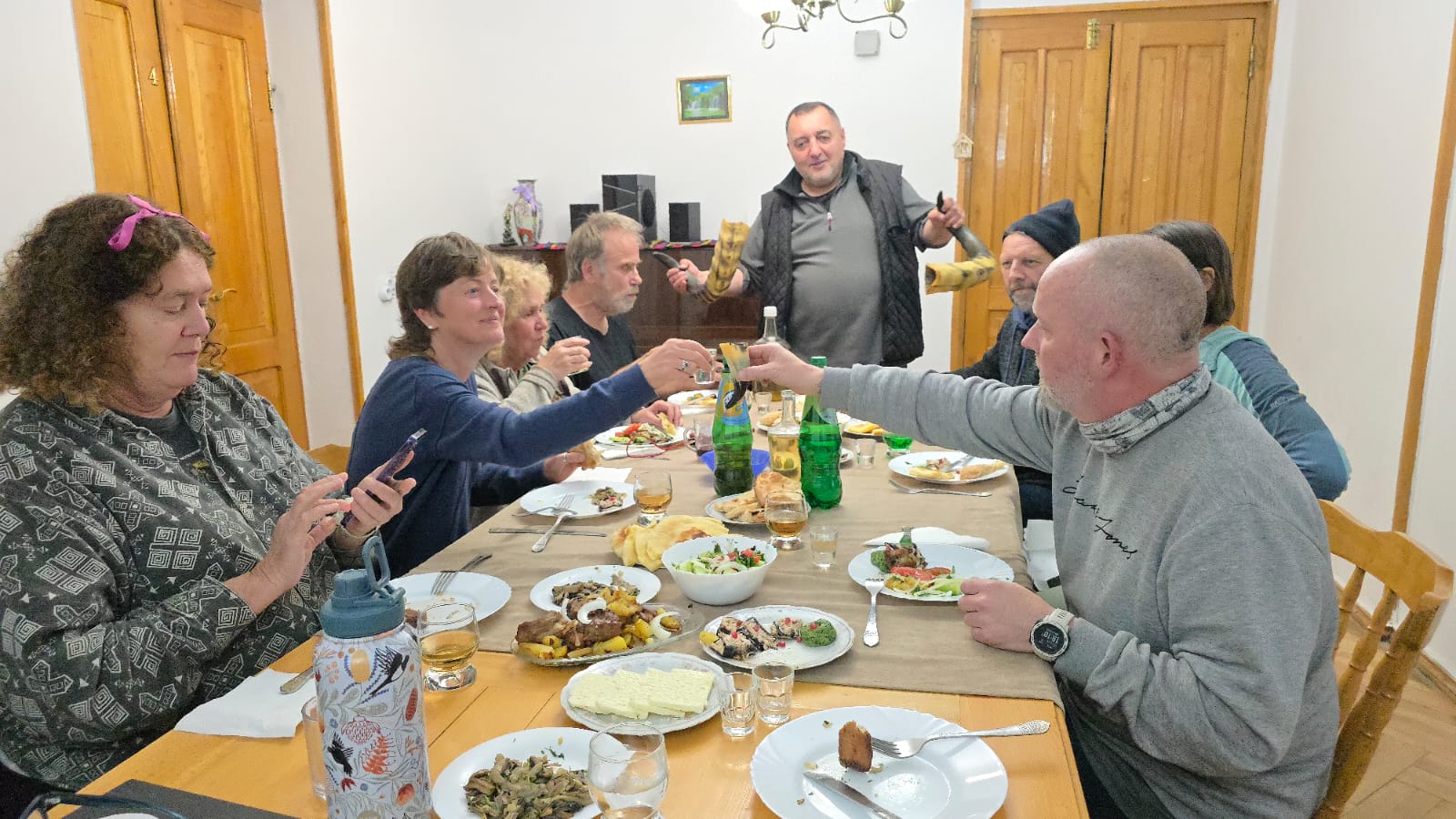
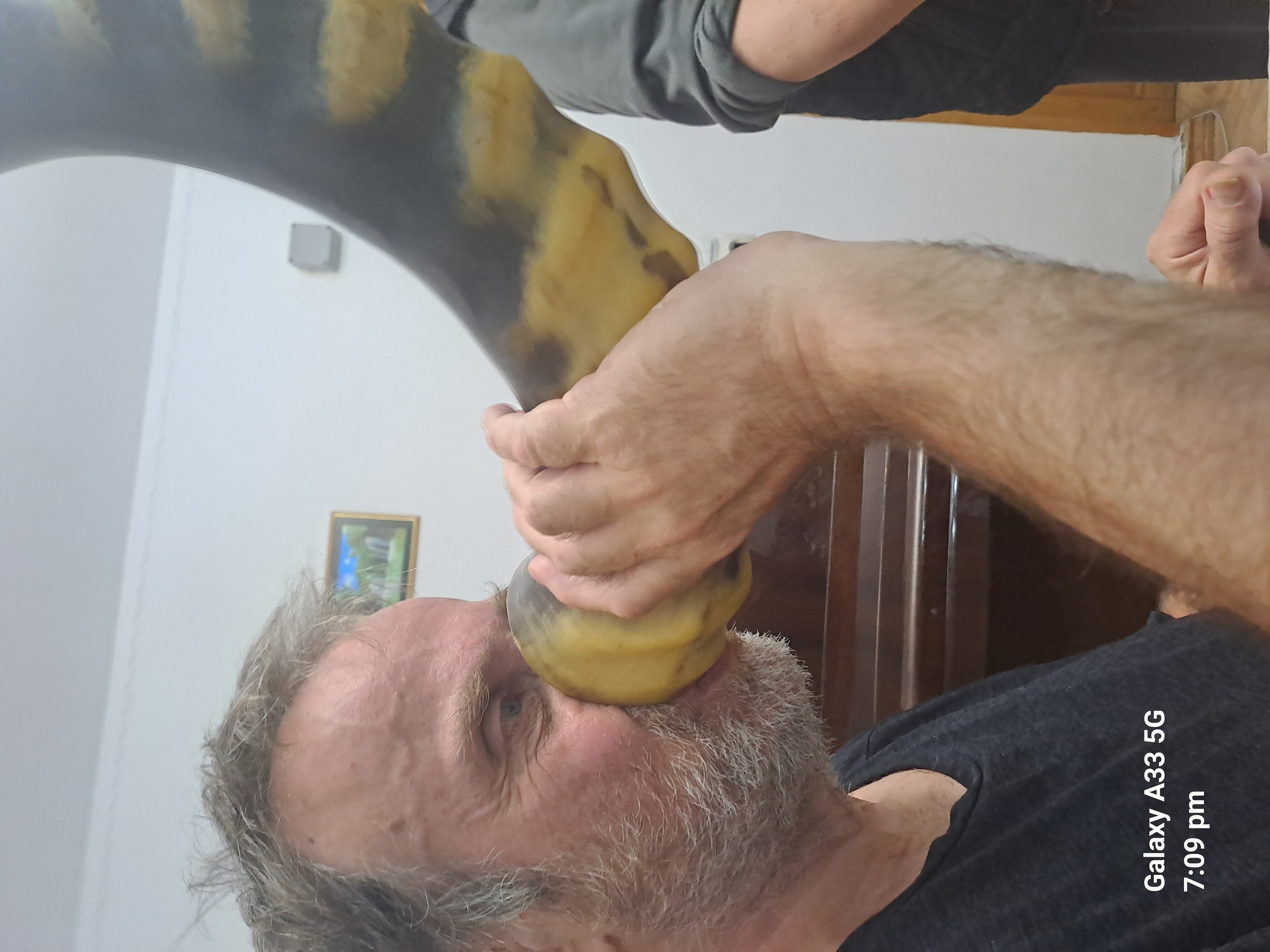
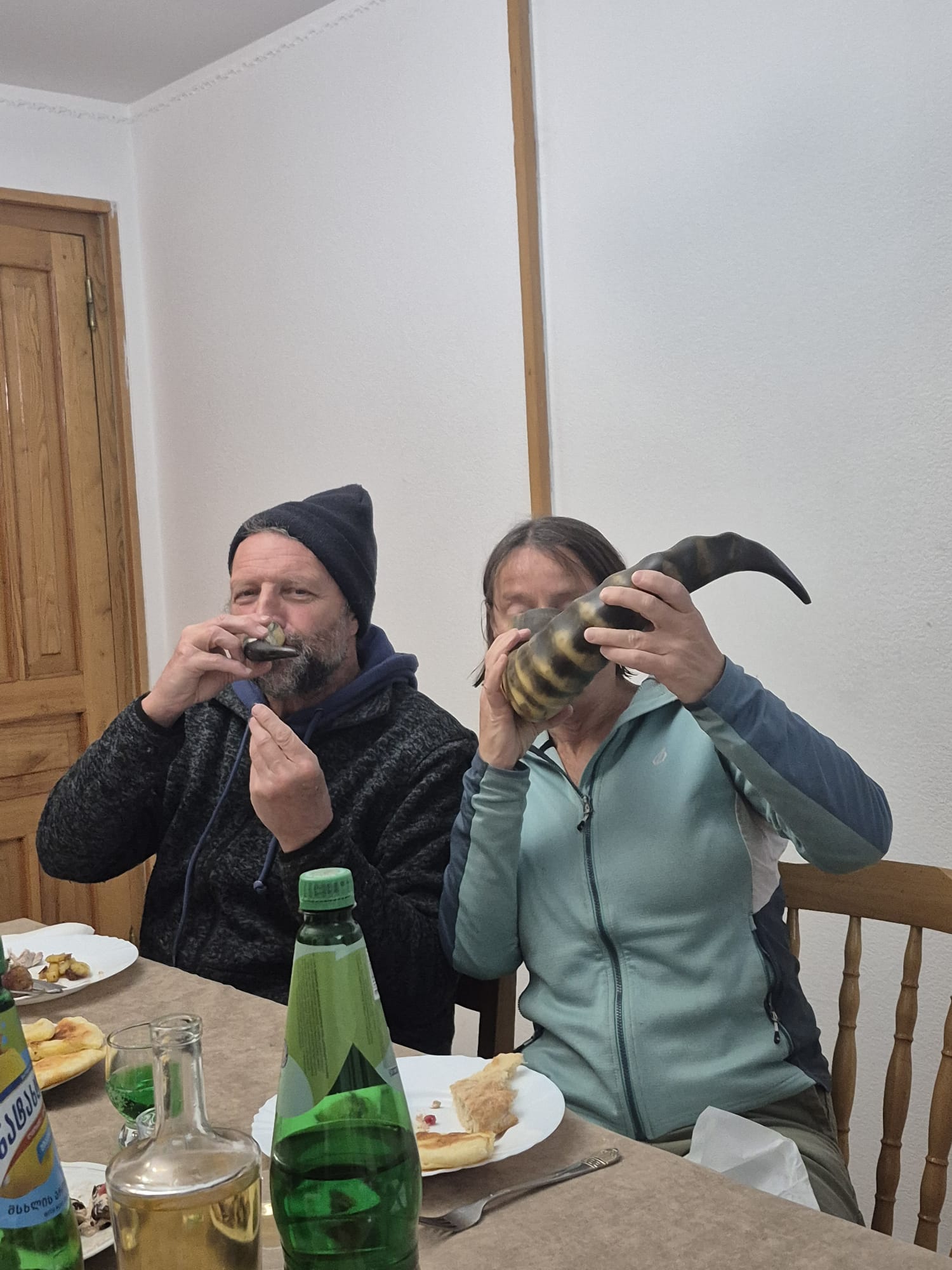

Day 4 and it started bright and sunny. we knew this was our one chance and snow was then forcast for several days. The locks on the truck were defrosted again and our driver had the tricky job of getting down the hill to where the gritted roads were. Strictly no passengers. The decision to go for it was made although the road was still closed to lorries, as it was our only window.
By the time we left the main roads were melting and gradually turning black. We over took and then joined a convoy of trucks progressing through the avalanche tunnels along the road. It began to look like we would make it! When we finally made it through the last tunnel and saw to queue to go the other way we knew we were Okay. The problem with the road is the tunnels are to small to allow lorries in both directions at once.
while I was here I started reading my next book for book club. By coincidence set I’m Georgia so very relevant
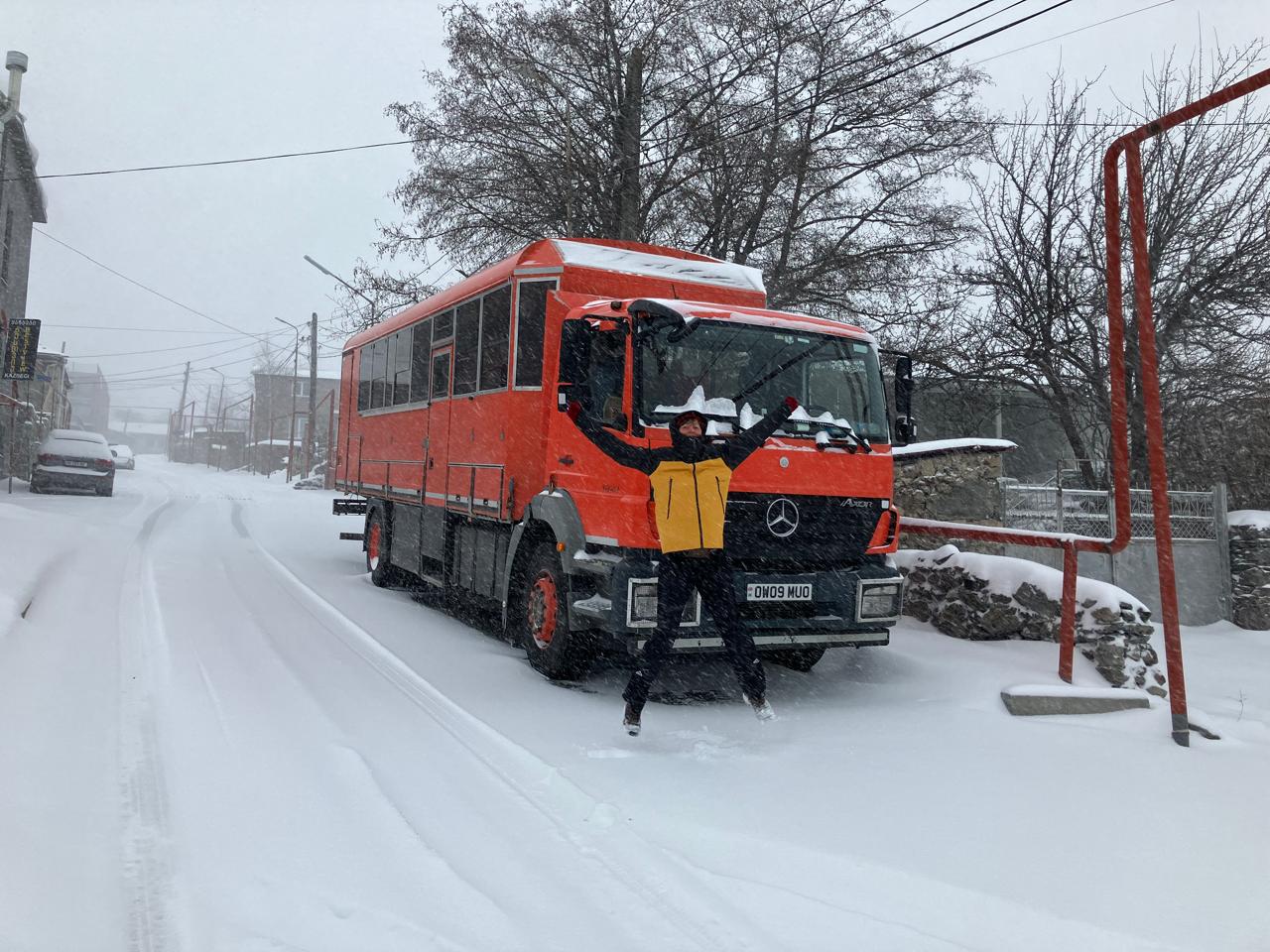
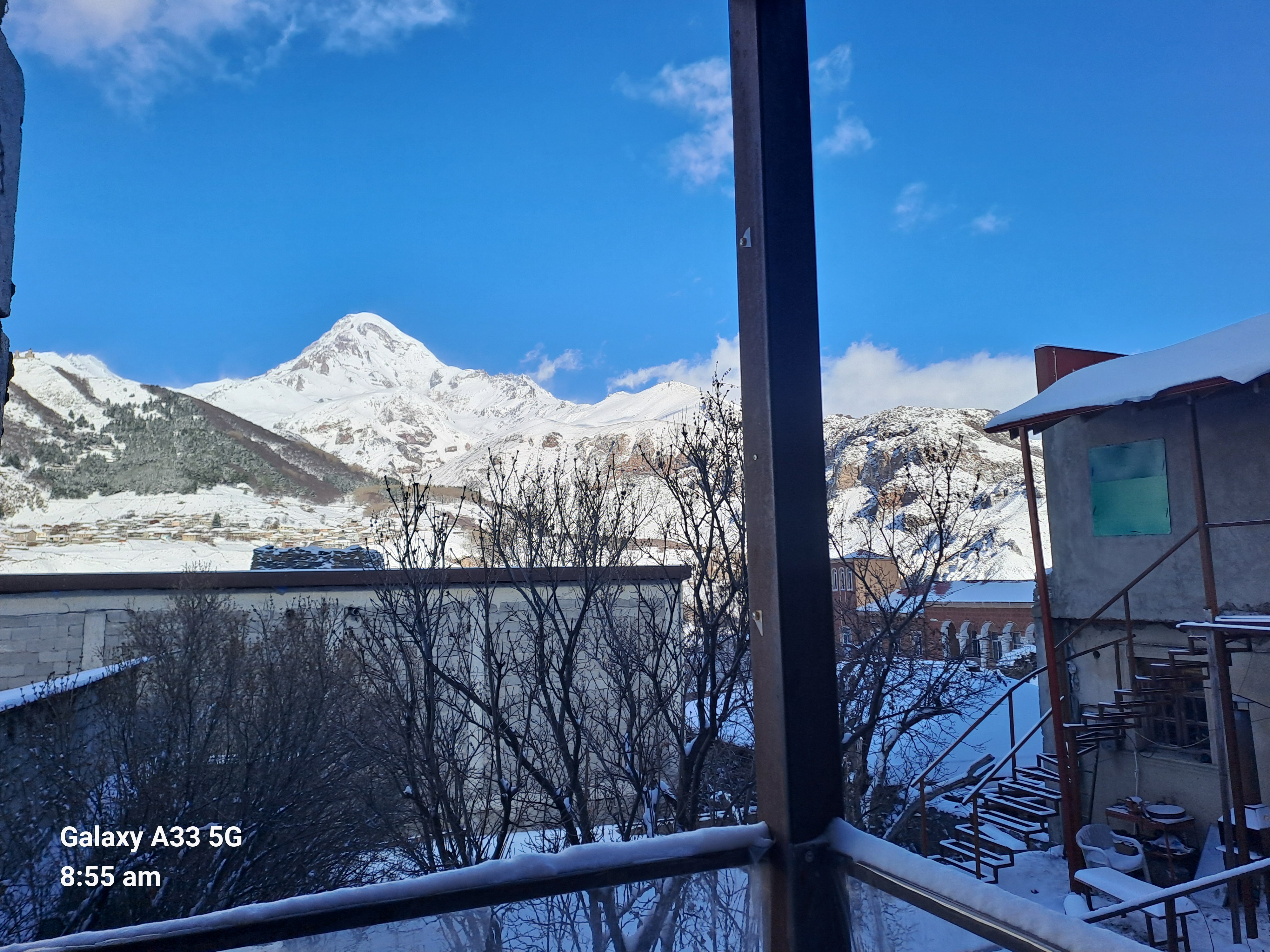
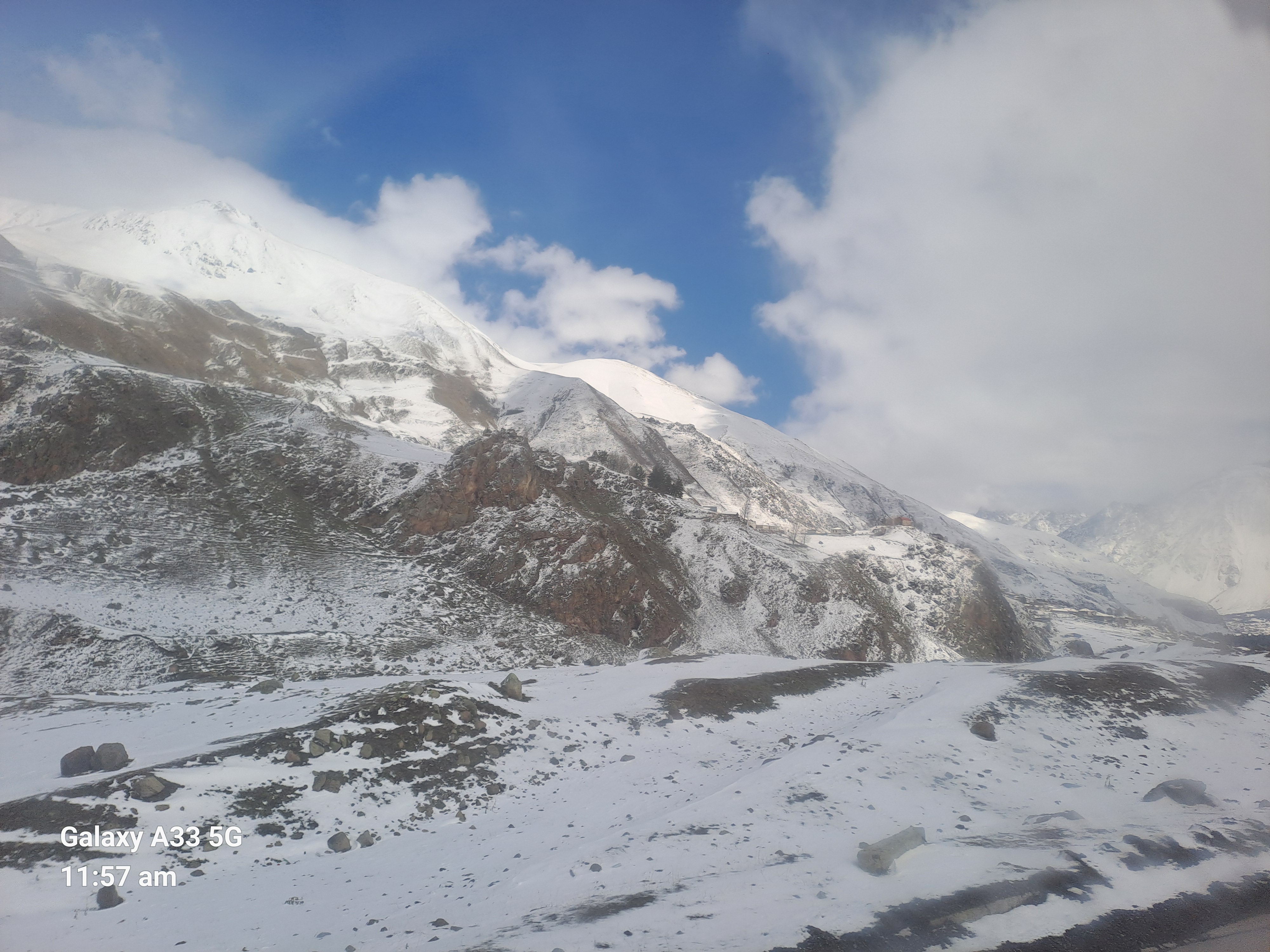
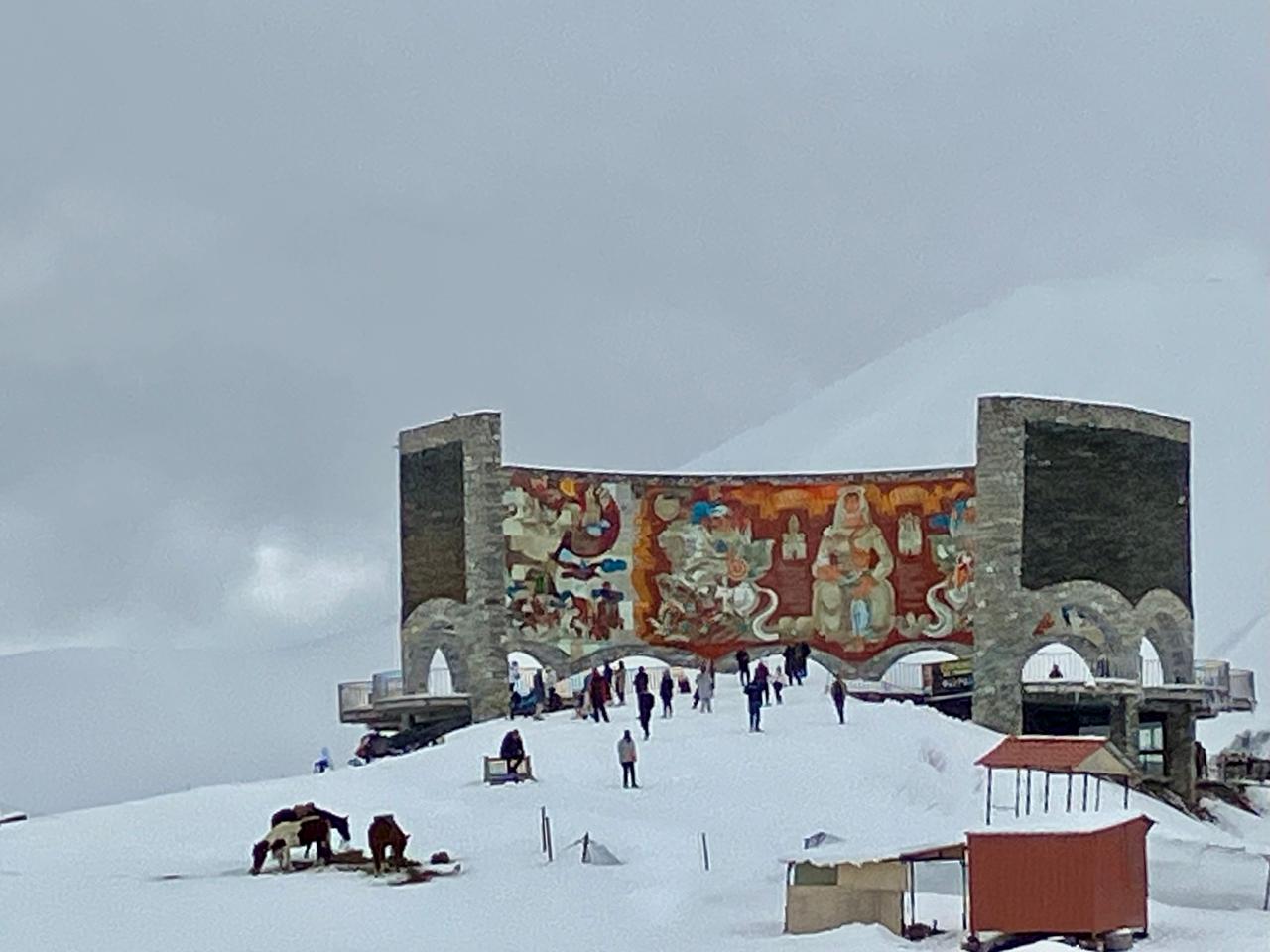
So we finally arrived in Tbilisi. Our hostel was at the top of a hill that got progressively steeper as we went up. At the top as we gathered im the courtyard we all wheezed and coughed together to recover.
By now it was Friday and too late to go to the Iranian embassy for visas as planned. So that had to be put back to Monday, and we celebrated Saturday with a wine tasting tour.
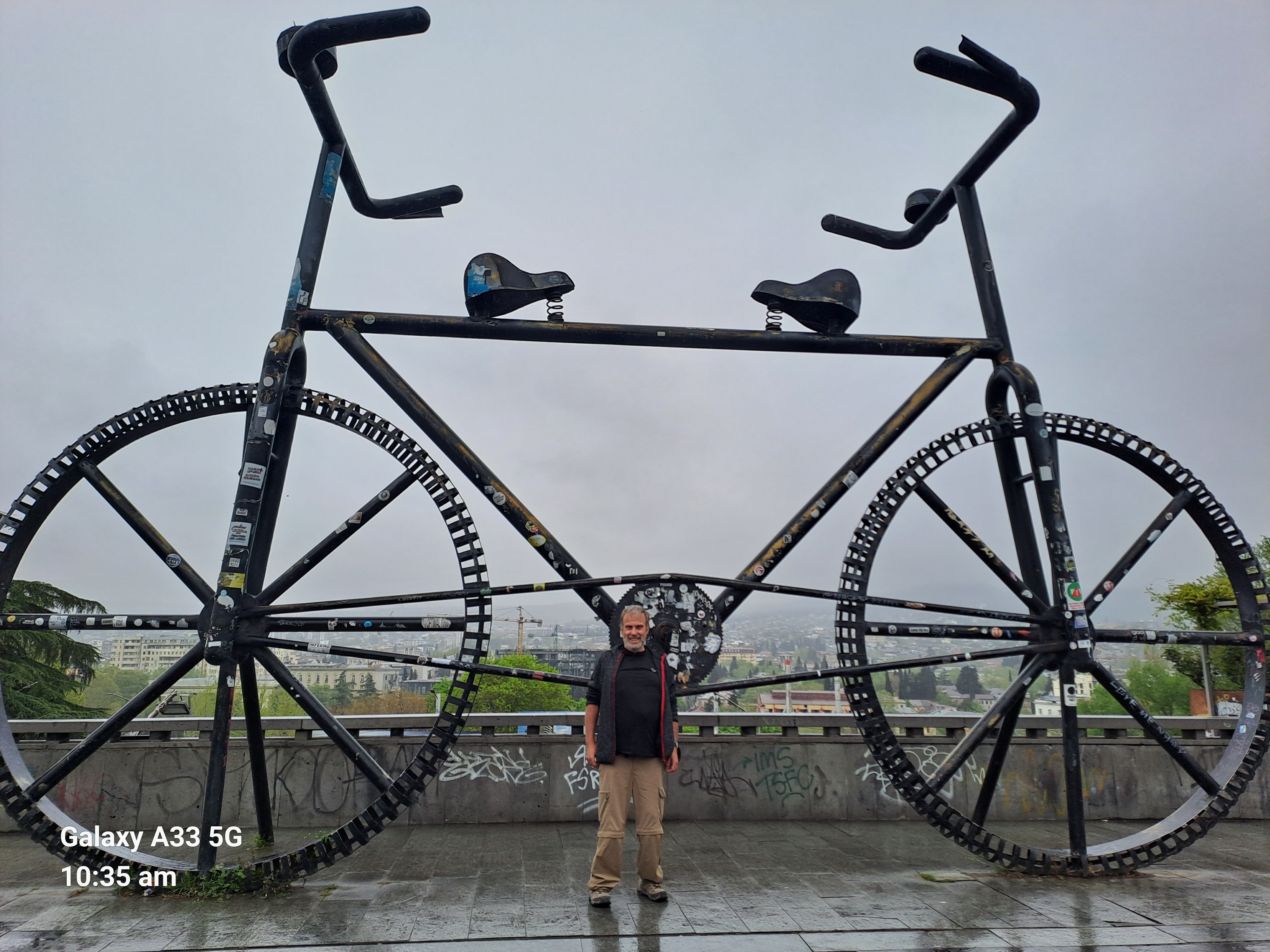
We got to understand more of the culture and found out Georgia has 325 varieties of wine producing grapes.
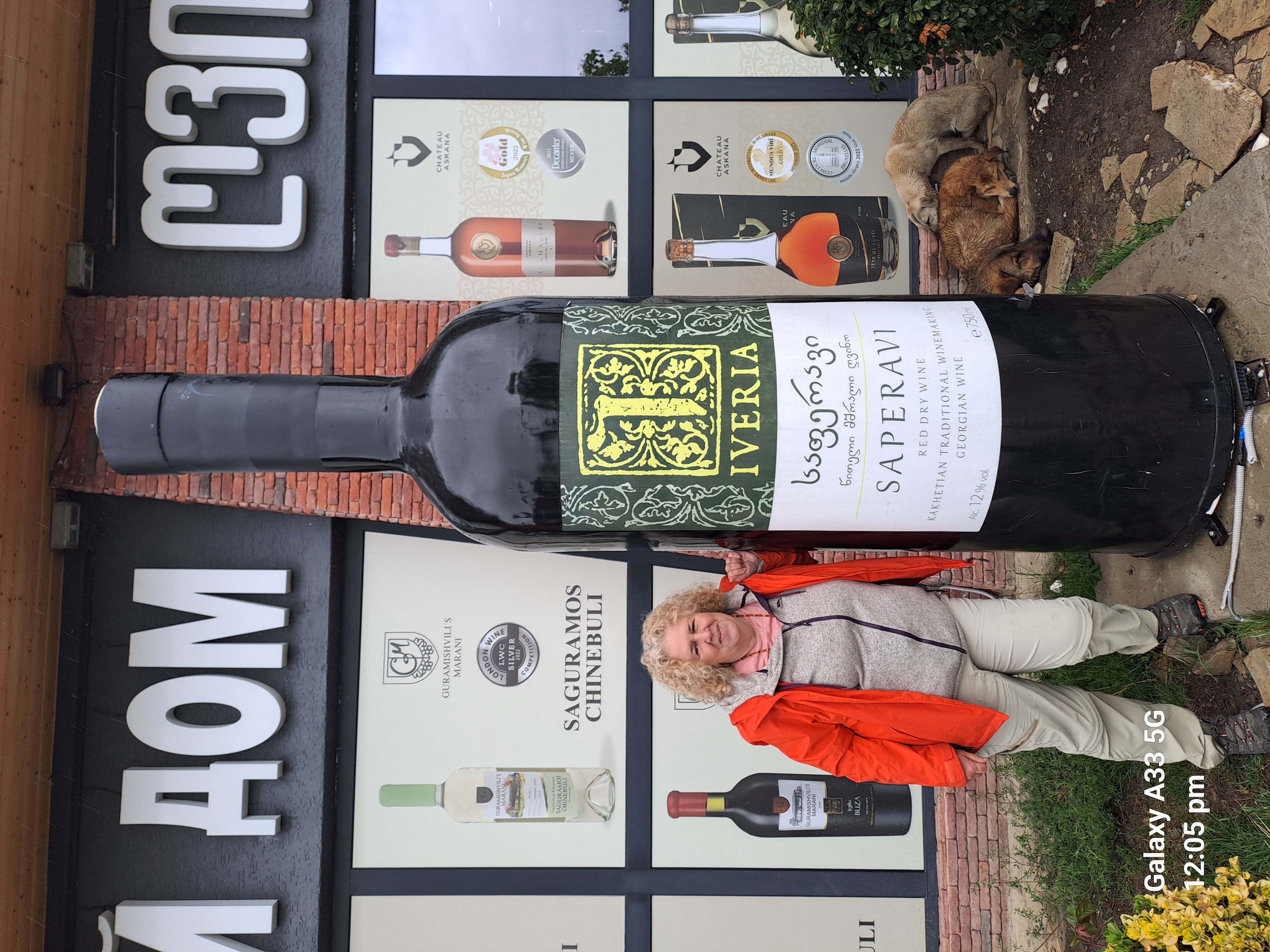
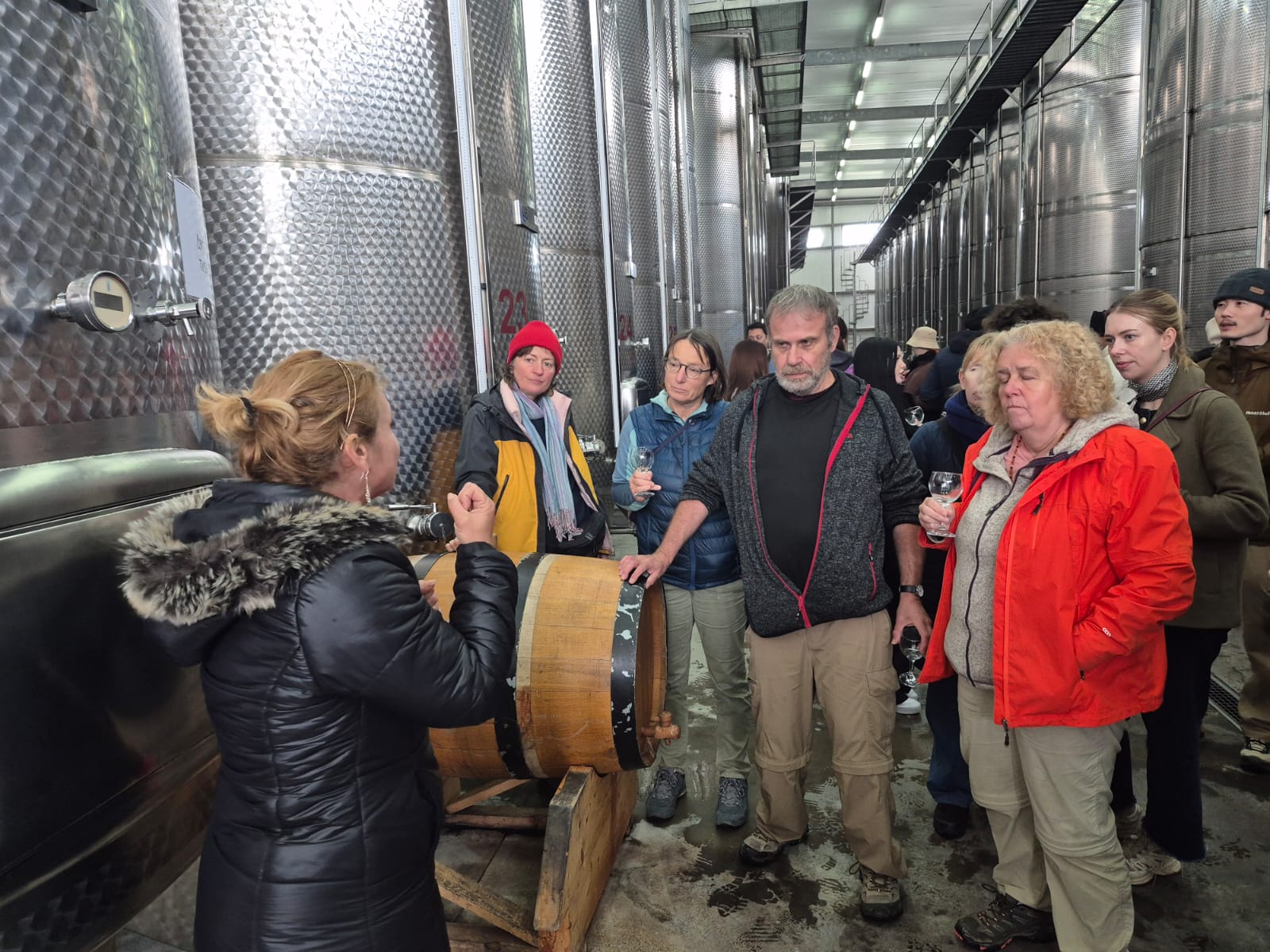
We got a sense of the strength of resistance to the Soviet attitude to religion. Our guide Maddie explained her name is short for Madonna. This name was chosen as it was Italian and her parents thought this would get through the ban on saint’s names for children. We went to a church dedicated to St Nino. The patron ssint, who ntougjt Christianity yo Georgia. This was damaged by the frescos being whitewashed in the soviet era. It is now lovingly cared for by the nuns. A new church is being constructed along side now for regular use .
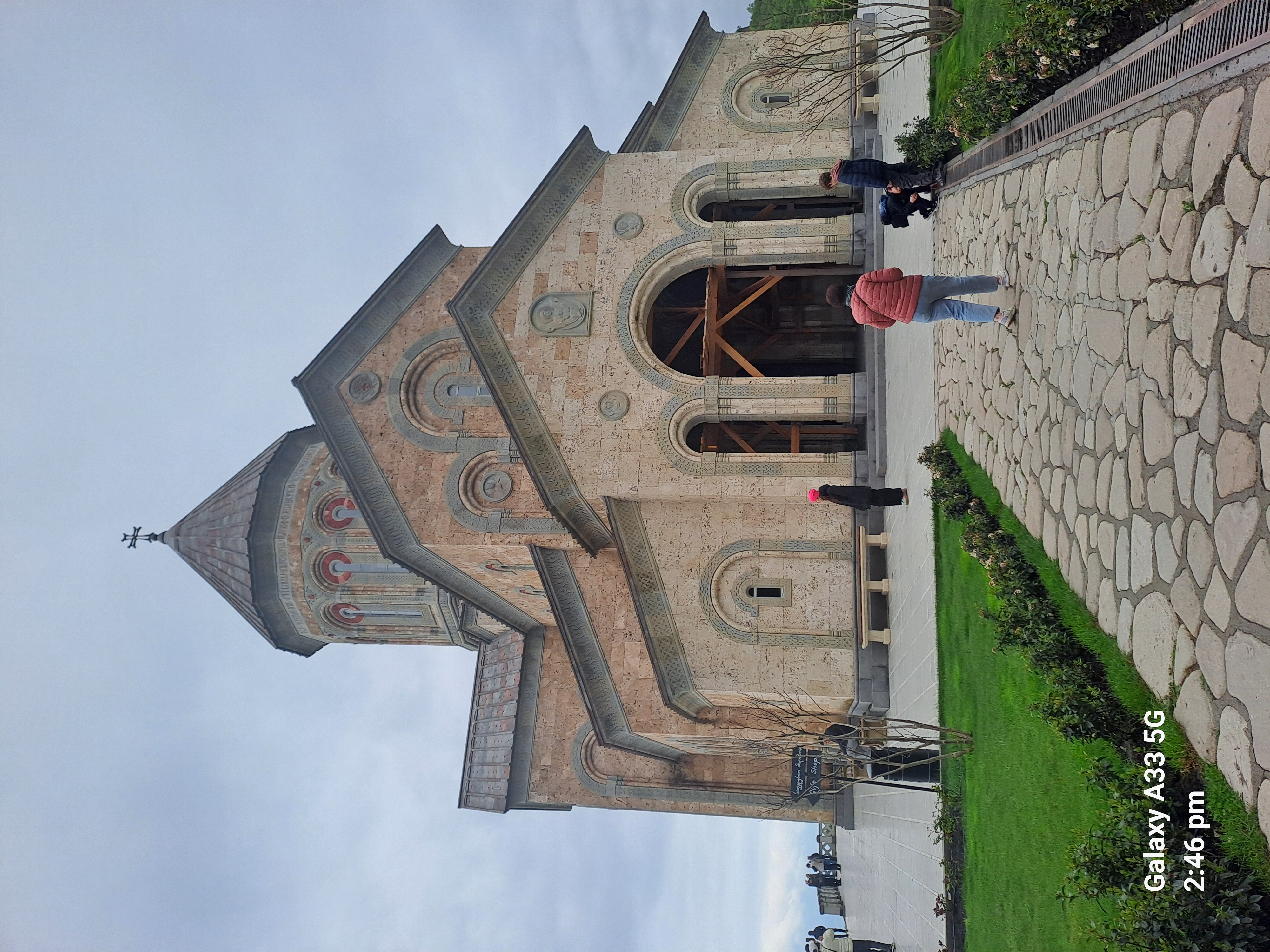
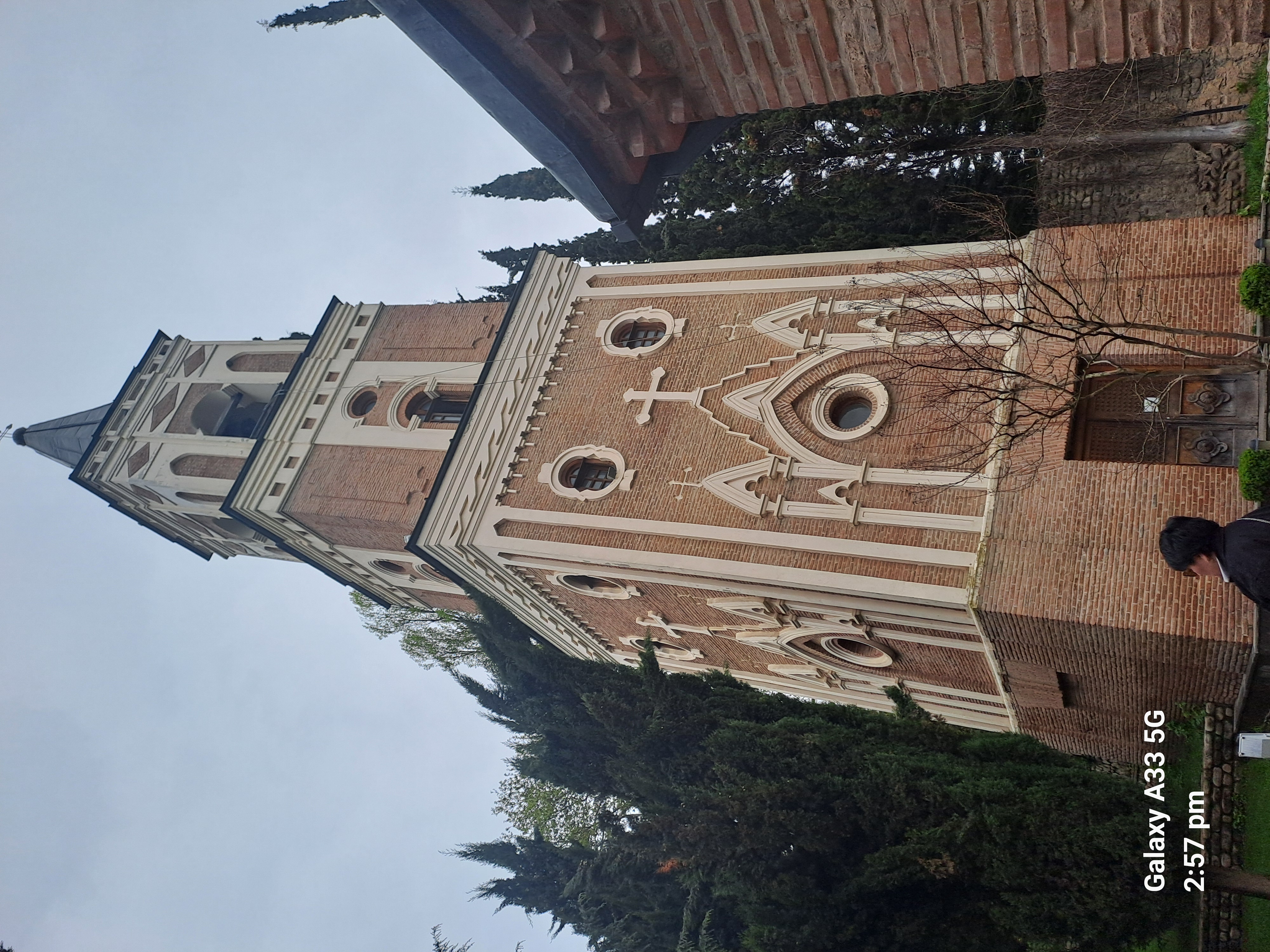

We also went to a quaint village with its defensive walls. Georgia has a history of constant invasion. This was where our tour guides father was shot and is one if the names recorded on the memorial.
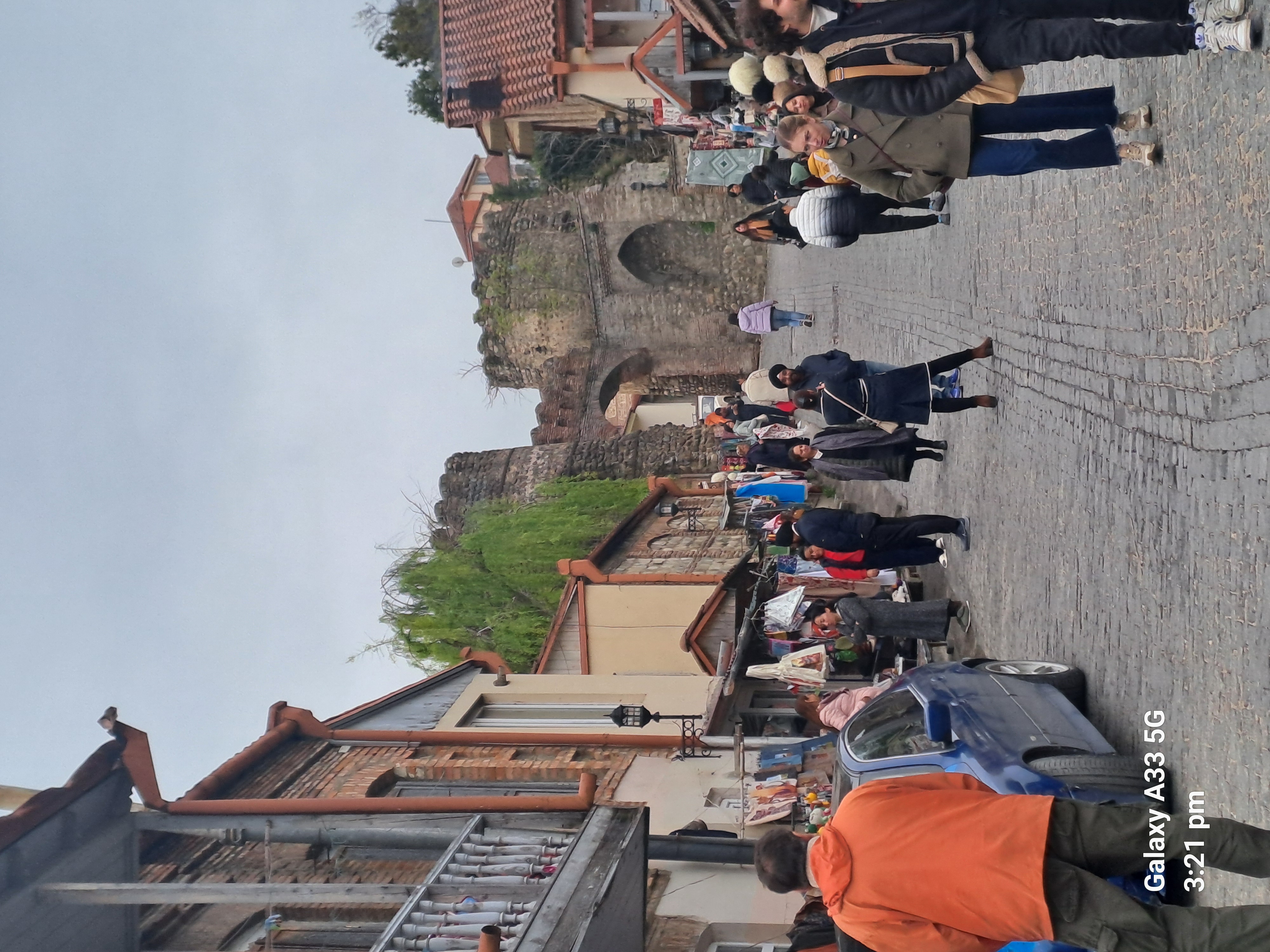
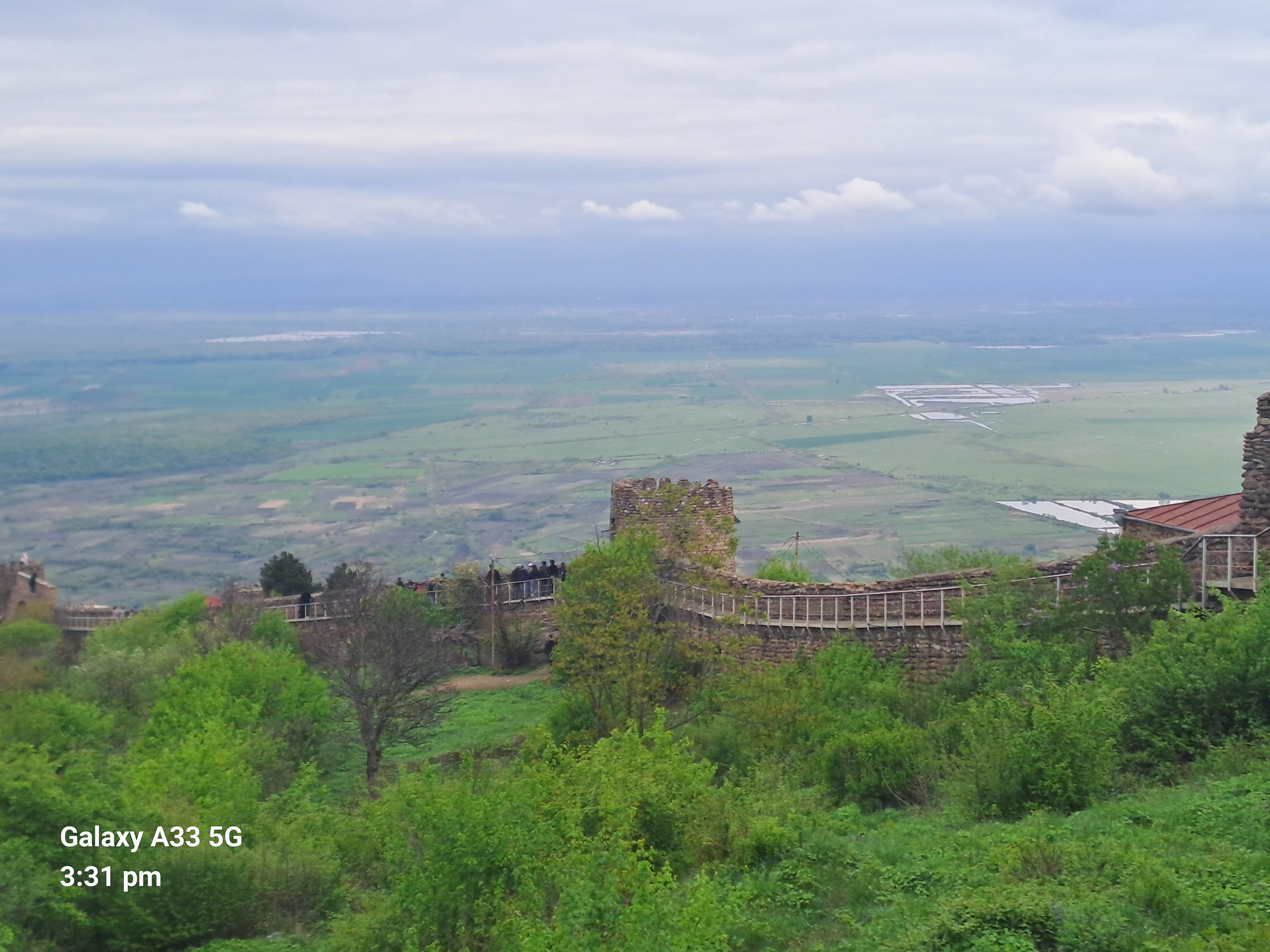
A guided tour around Tbilisi confirmed much of what the other guides had told us.
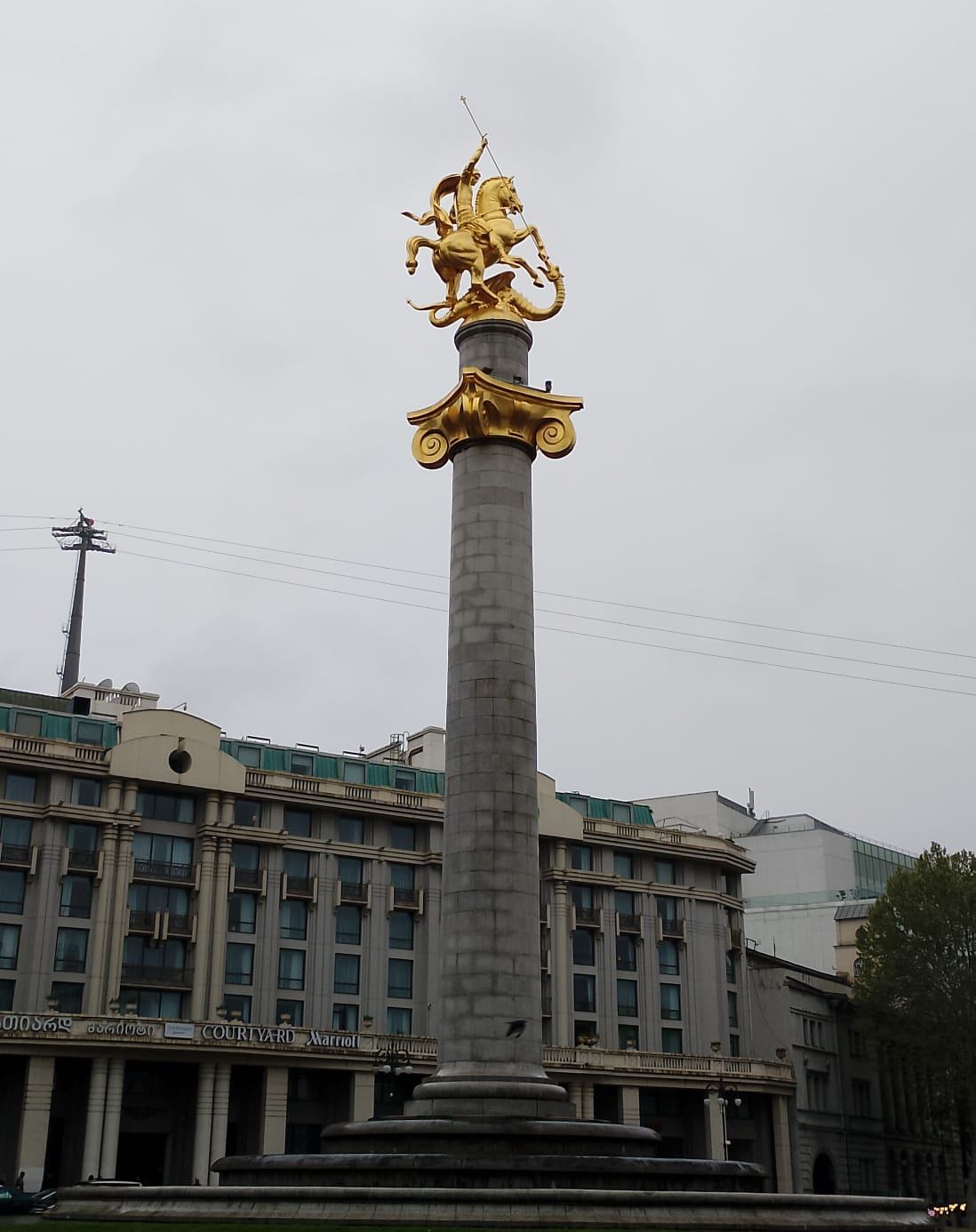
We saw some of the old now almost derelict buildings. Apparently these are very difficult to repair due to subsidence and original building problems.
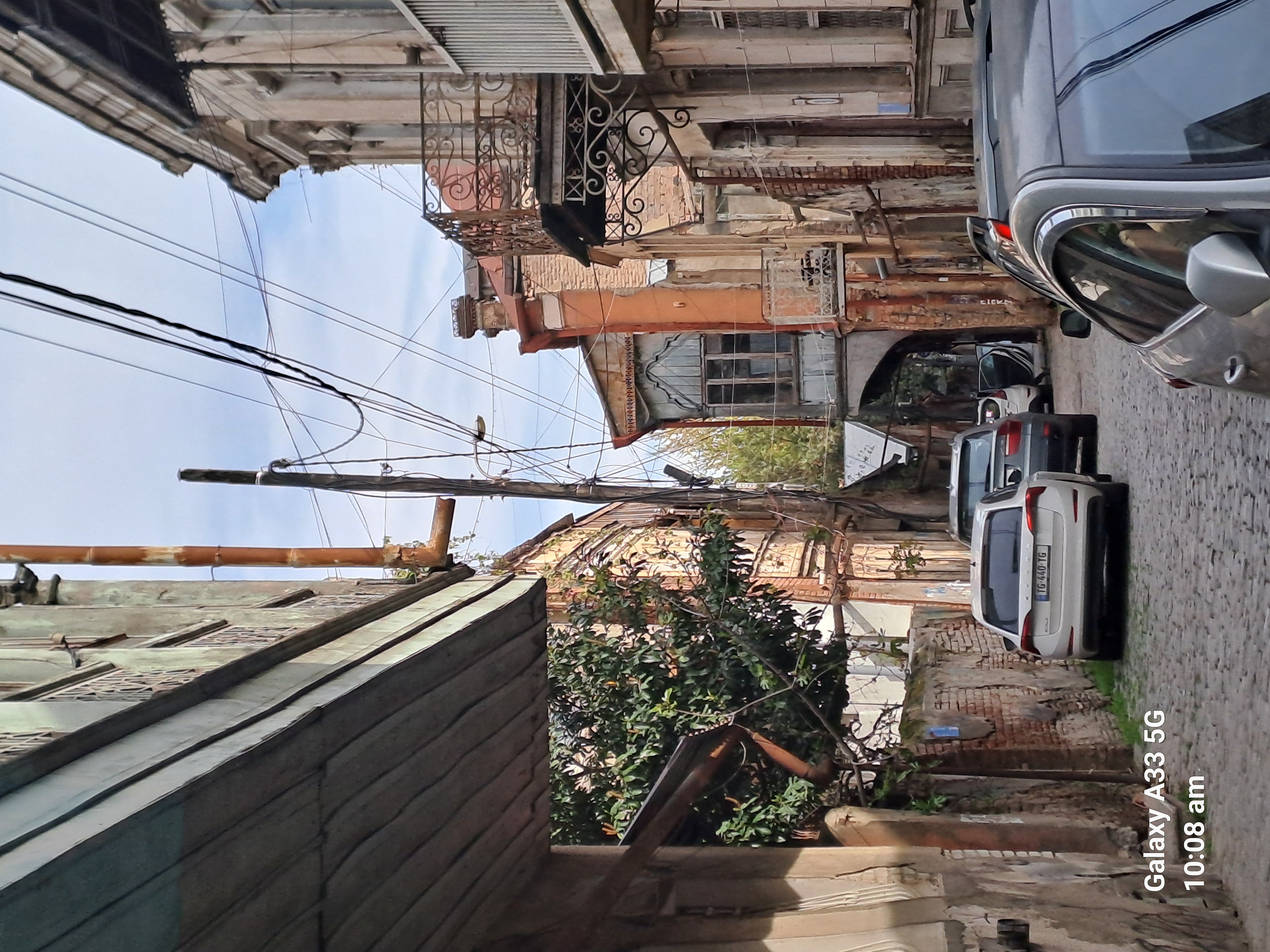
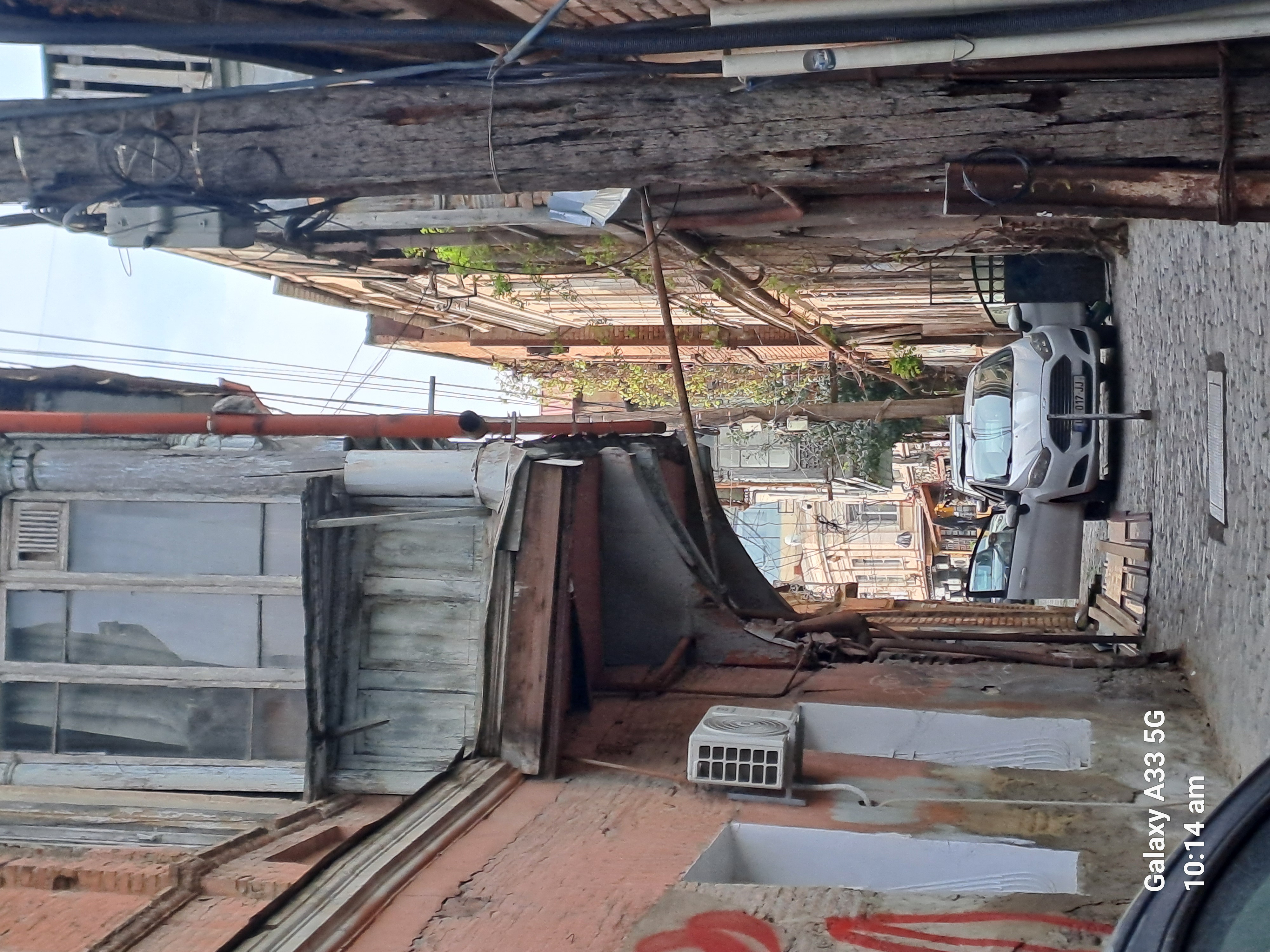
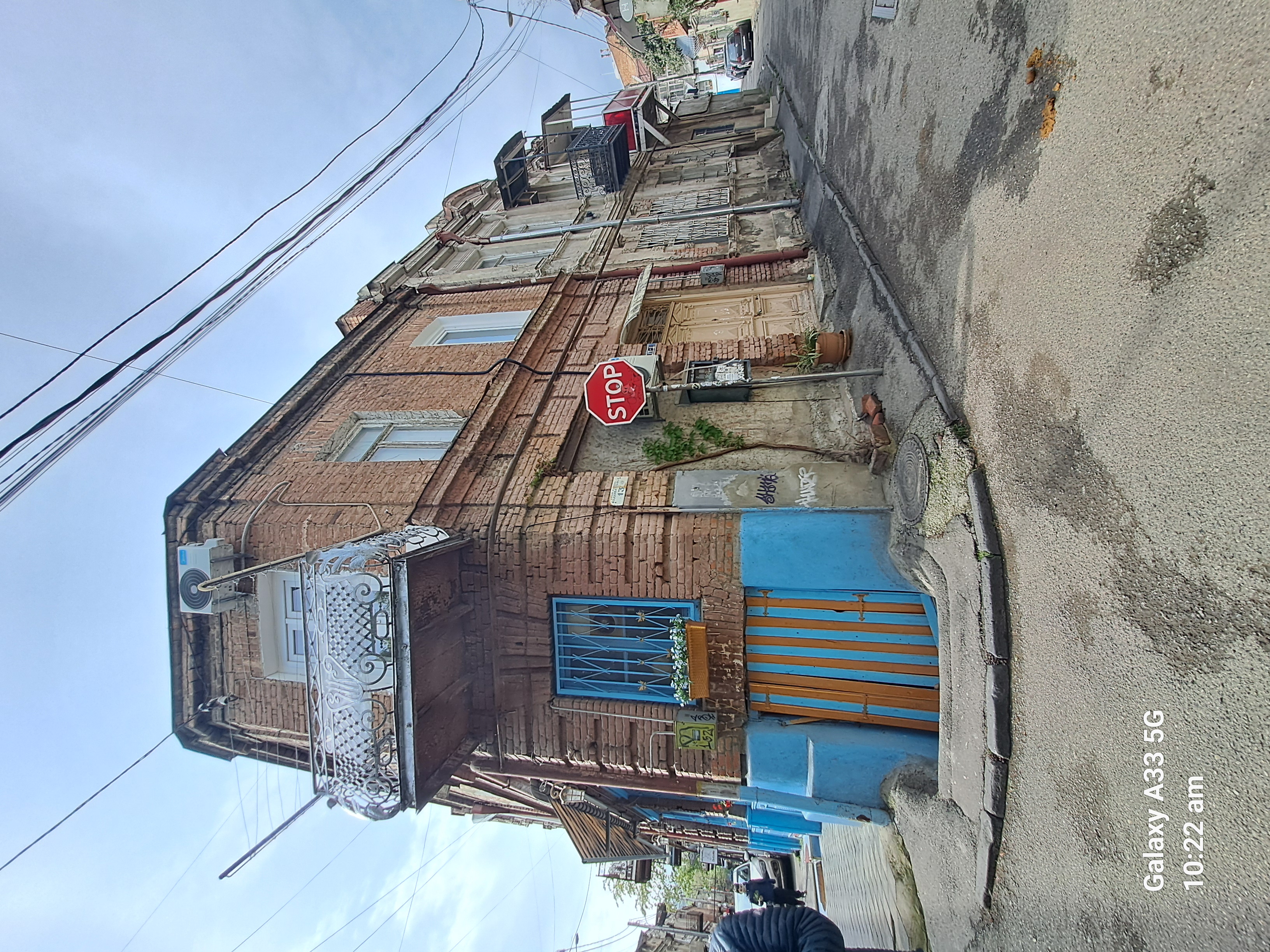
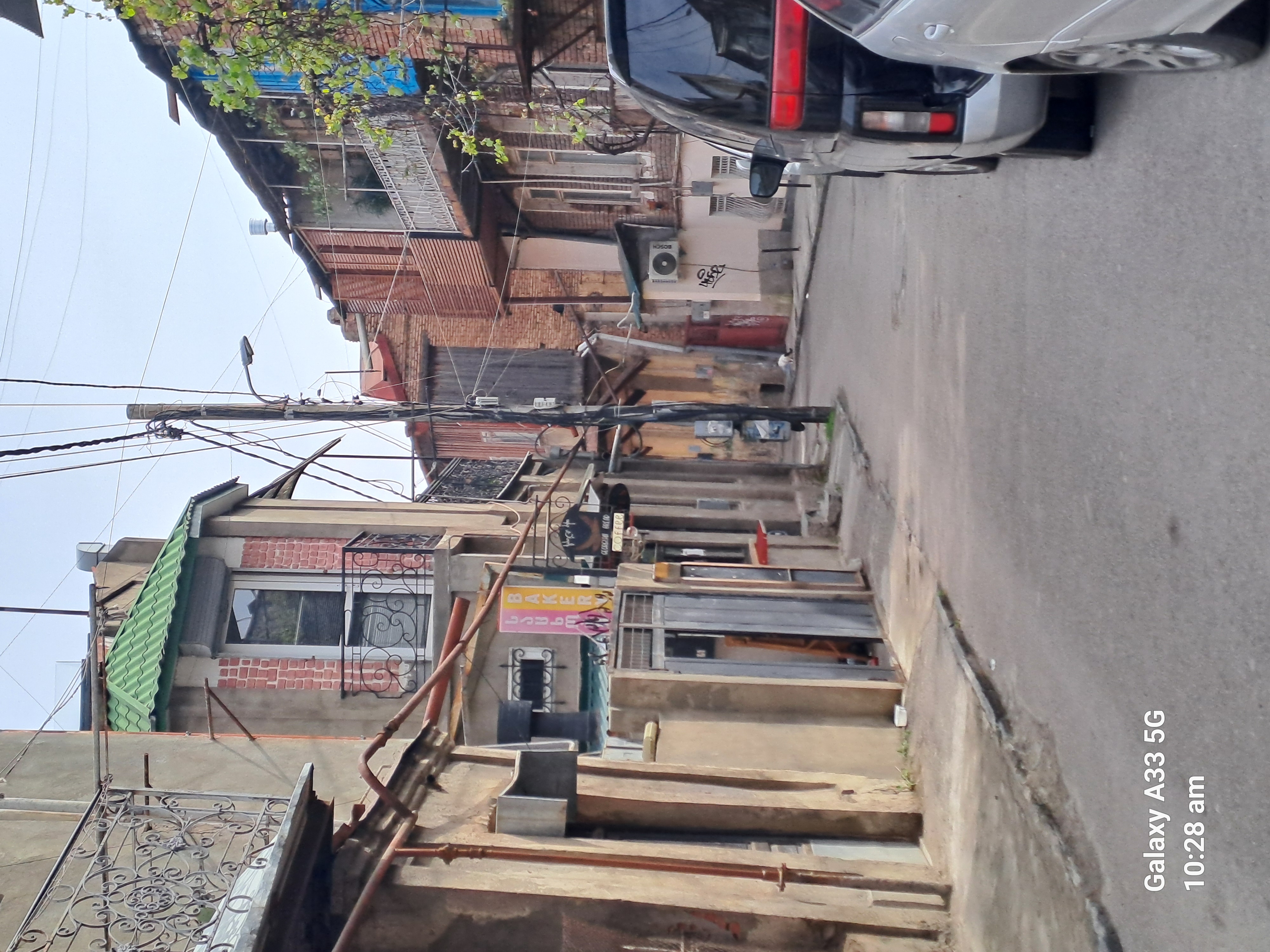
We also saw works by the local equivalent of Banksy
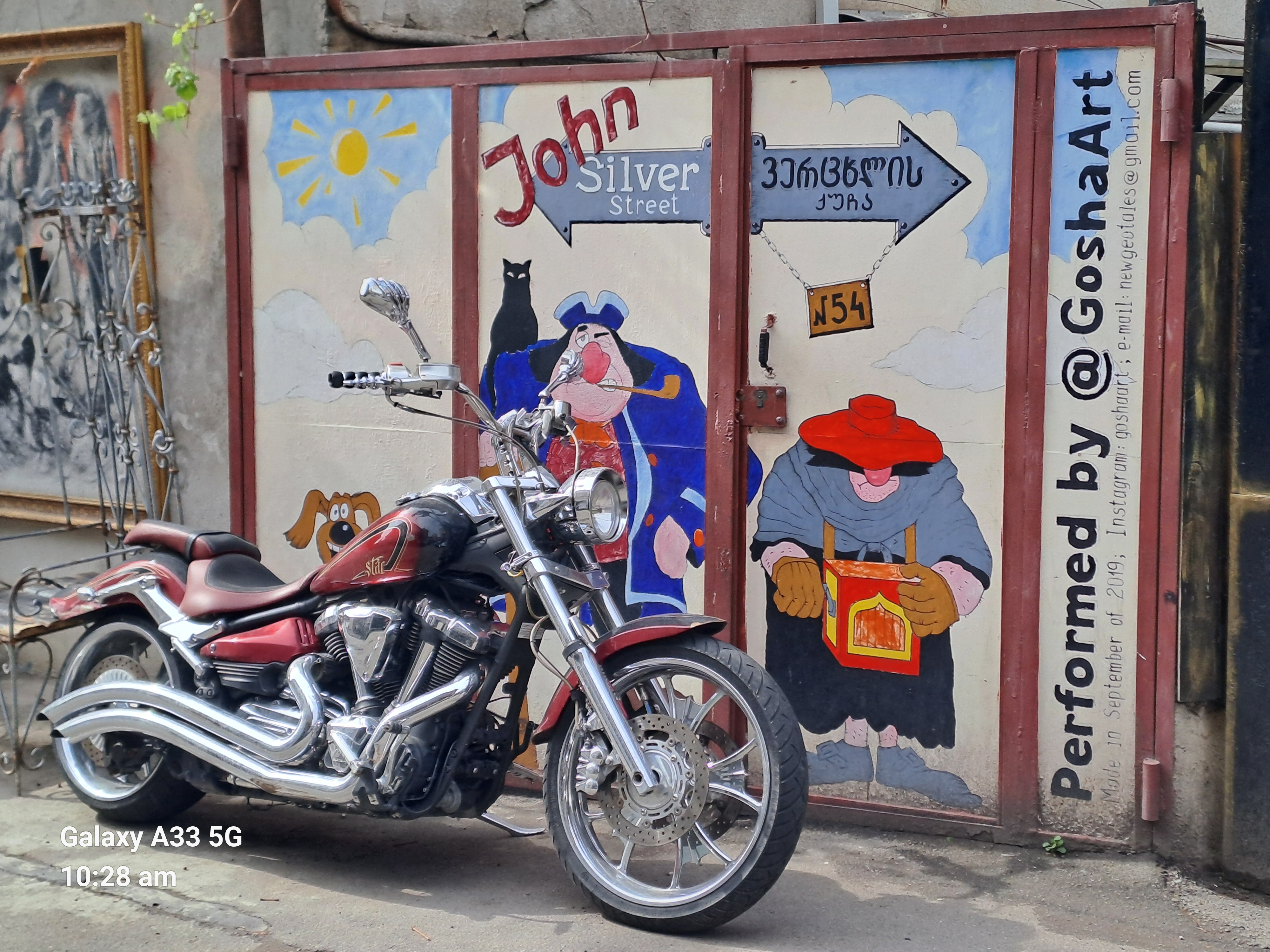

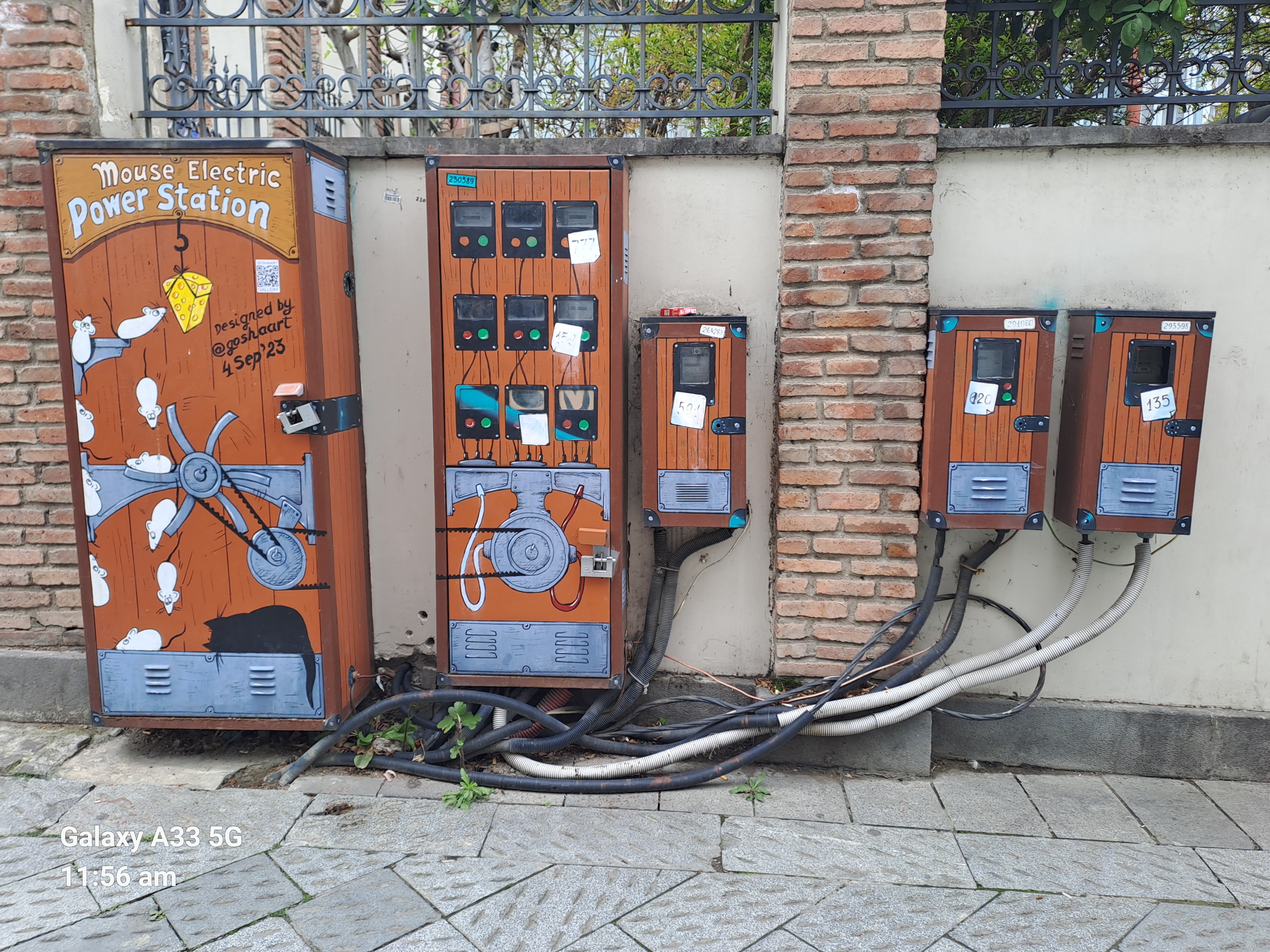
We saw the famous clock with the biggest and smallest clock in the same tower
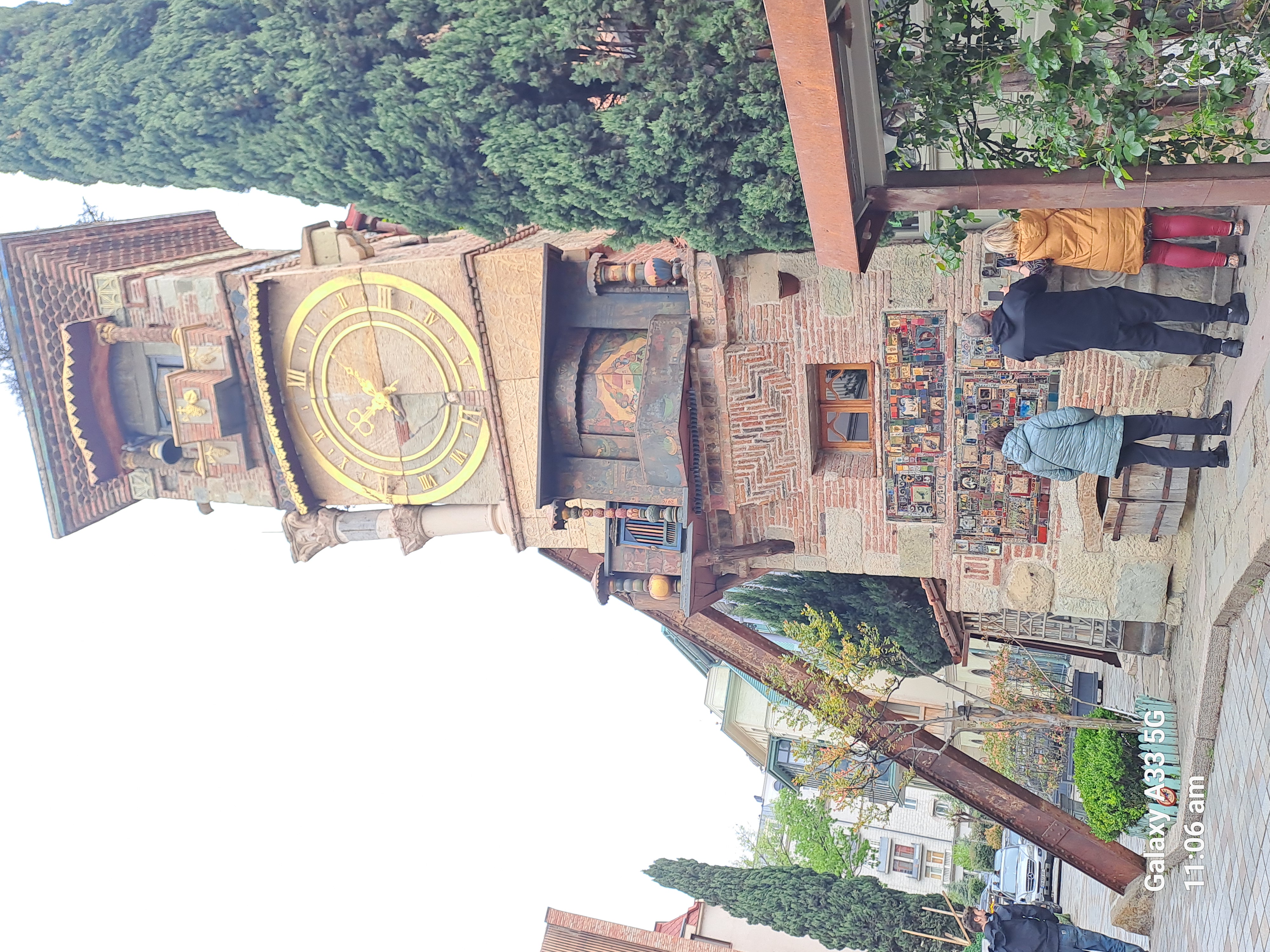

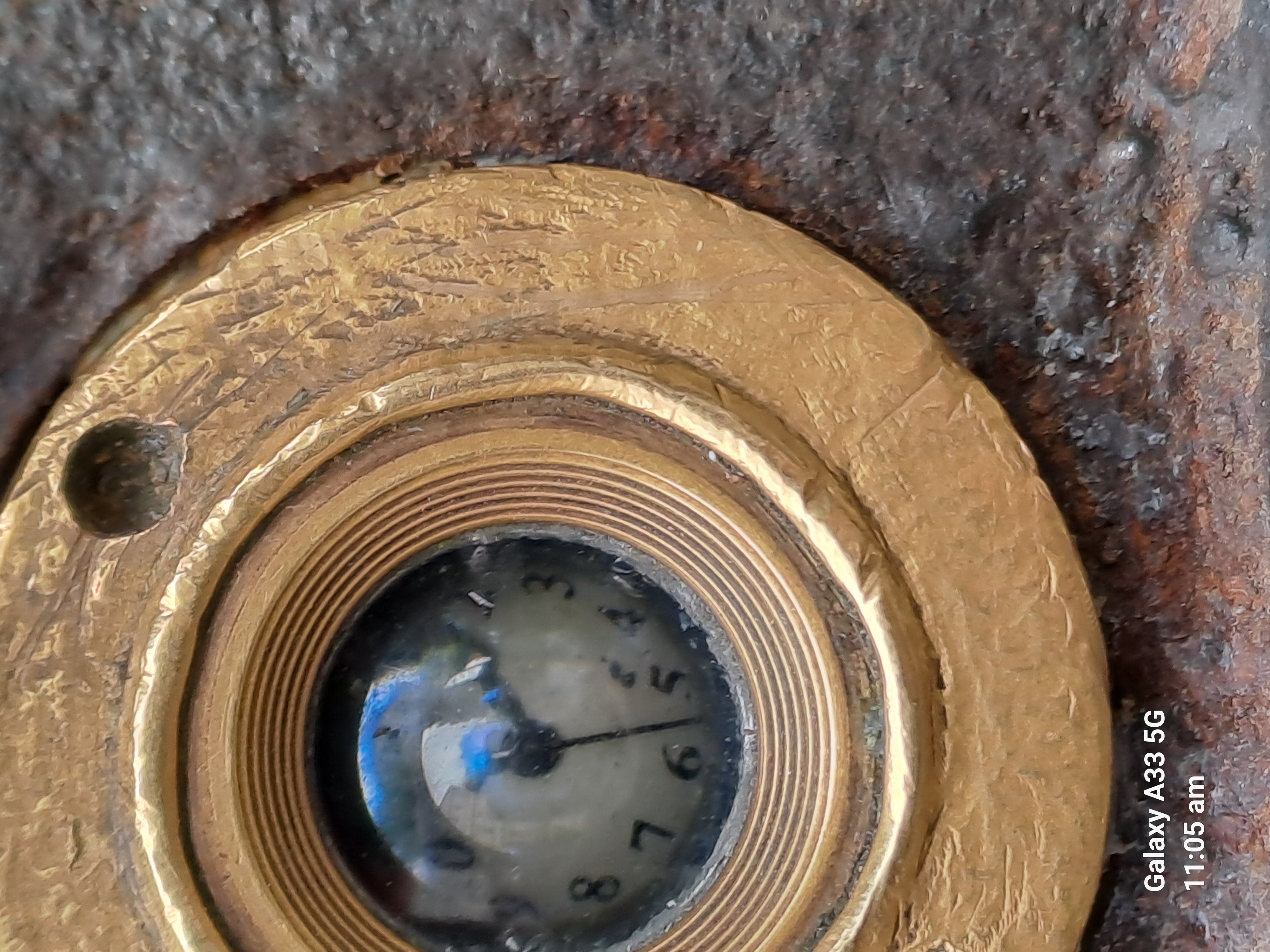
We met the Mother of Georgia with a bowl of wine for friends and a sword for enemy high up on the hill by the Botanical gardens. We were staying in one of the buildings just below.
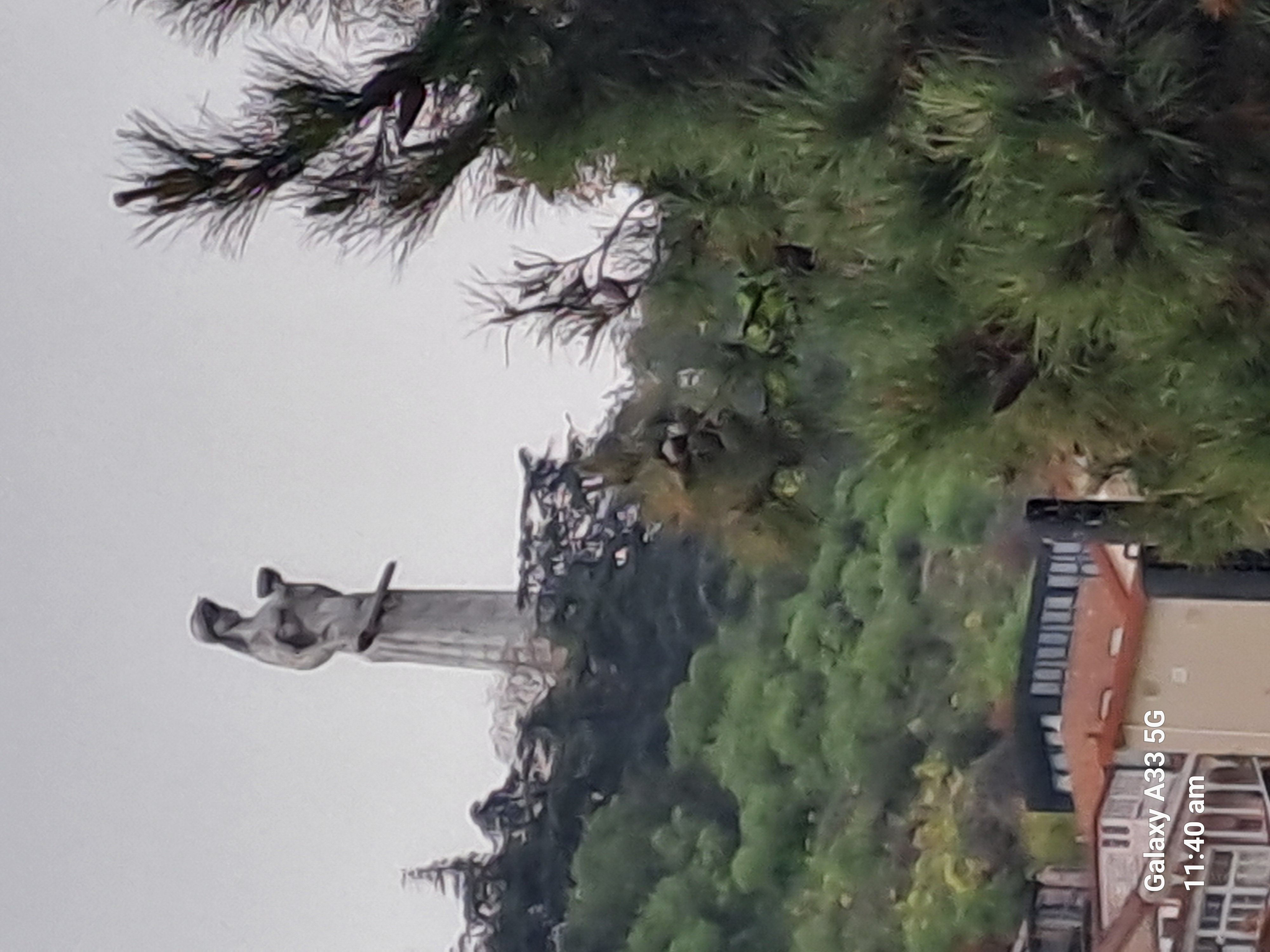
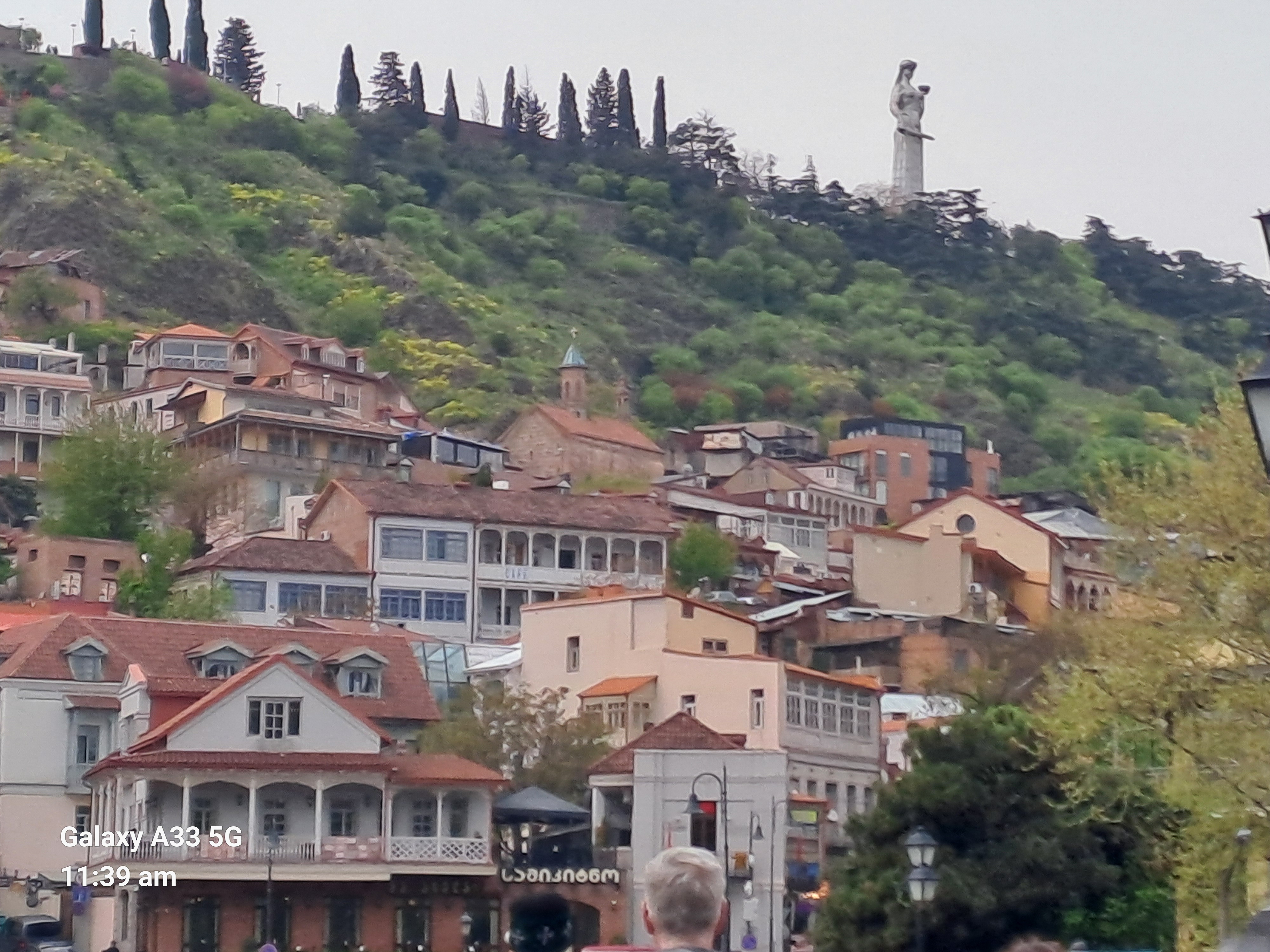
We saw the remains of the city wall and the still working oldest church
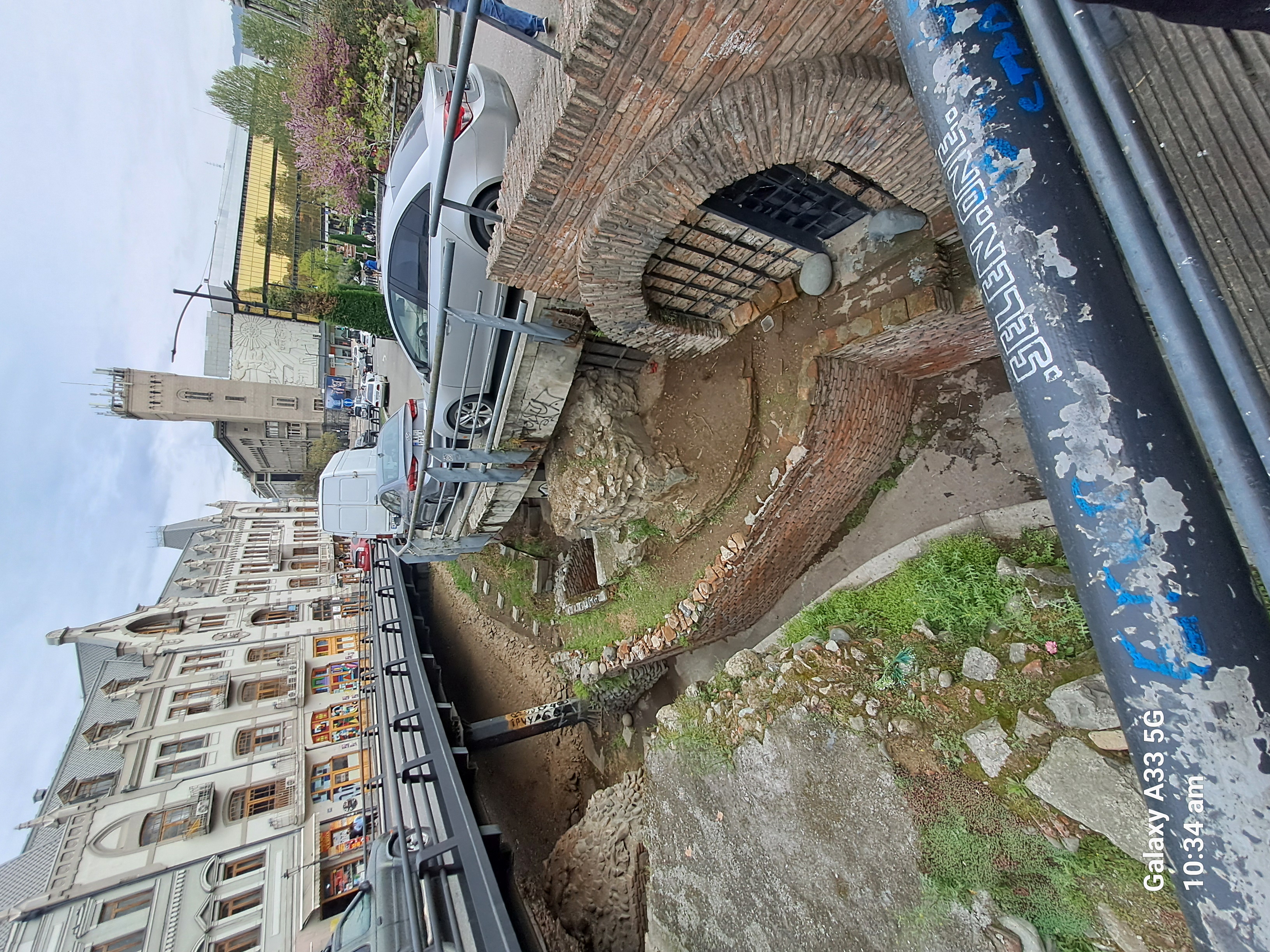

Modern glass bridge and old underground market
Trolley buses used as coffee shops and the sulphur baths.
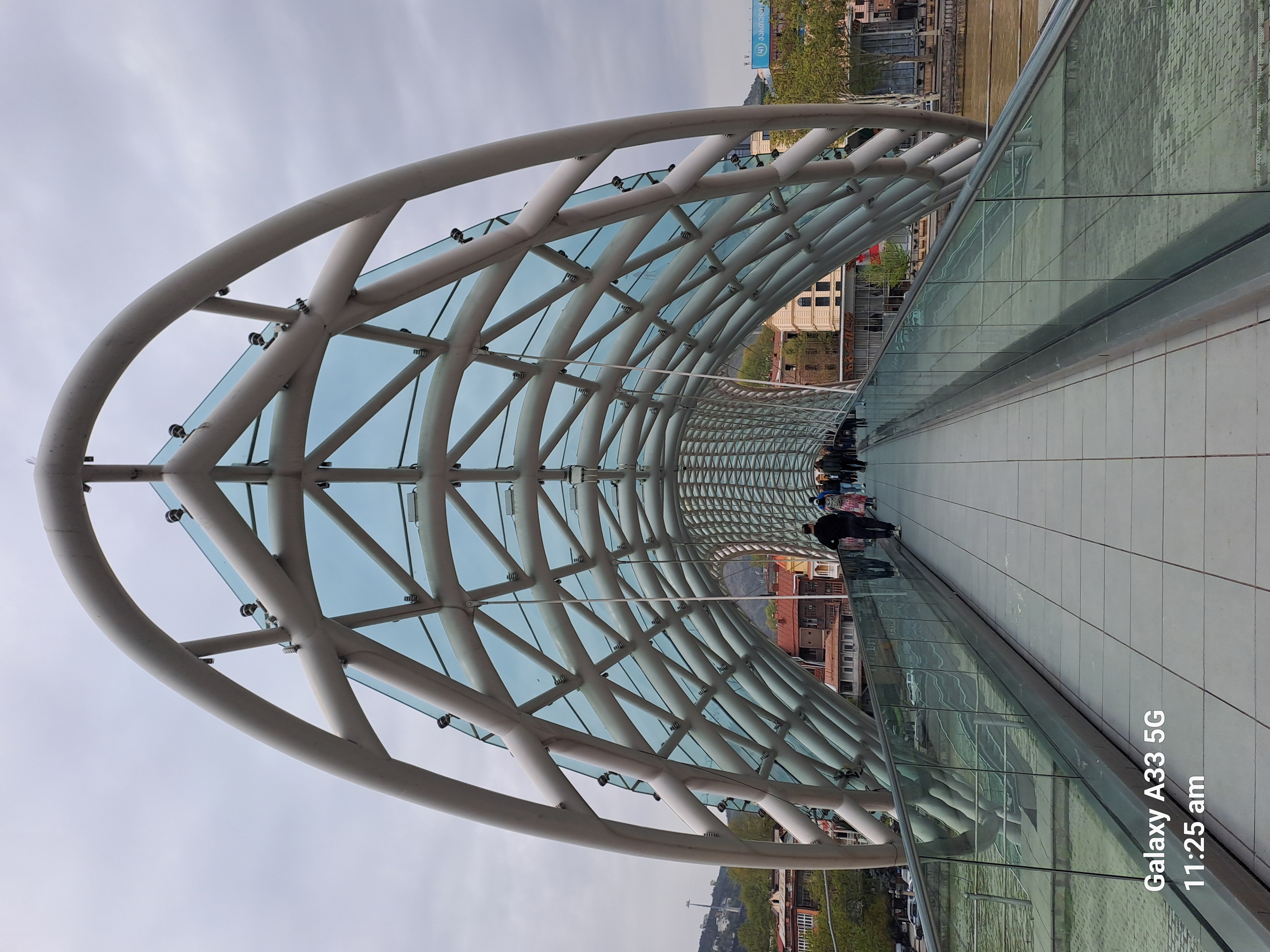
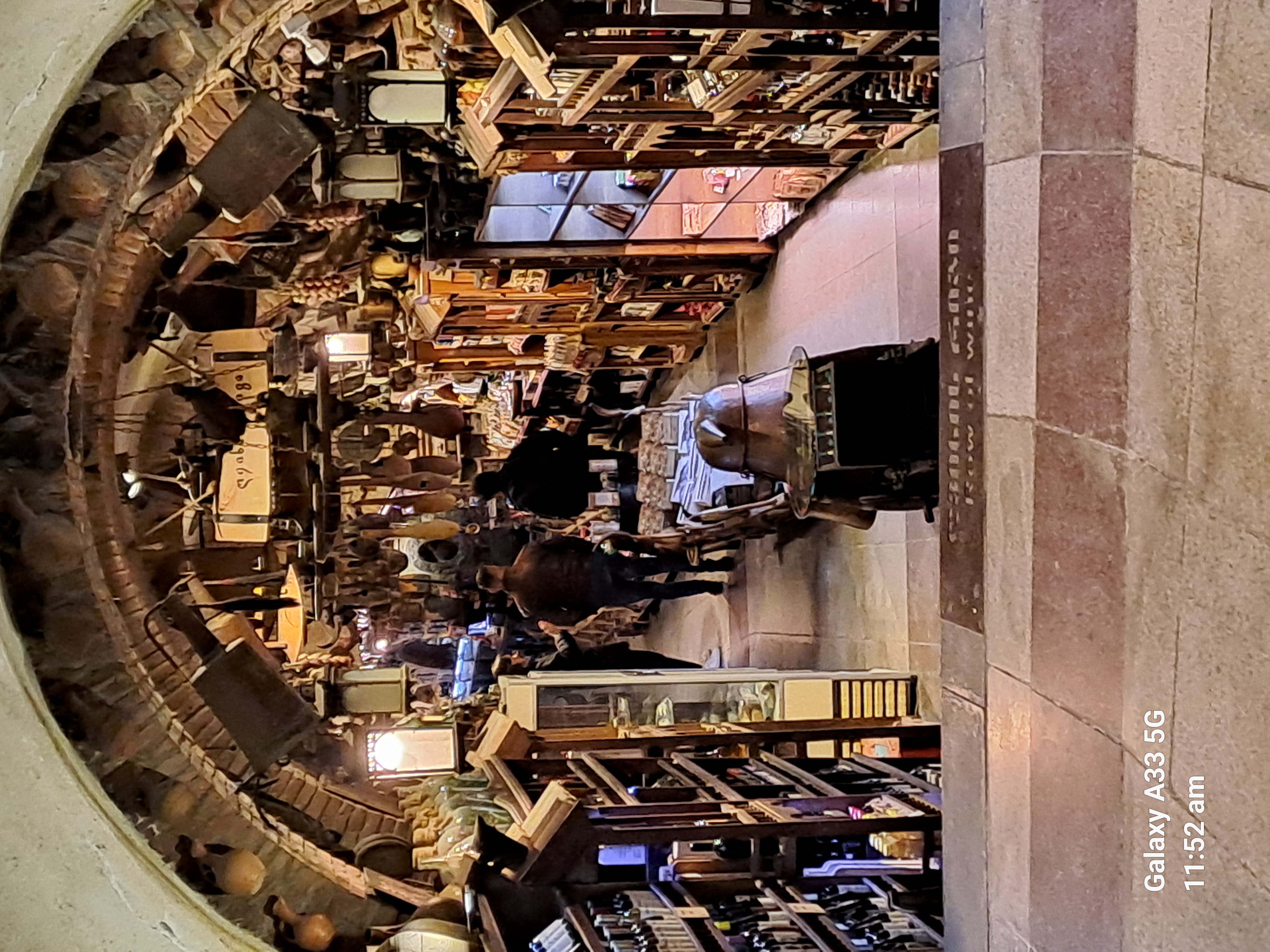
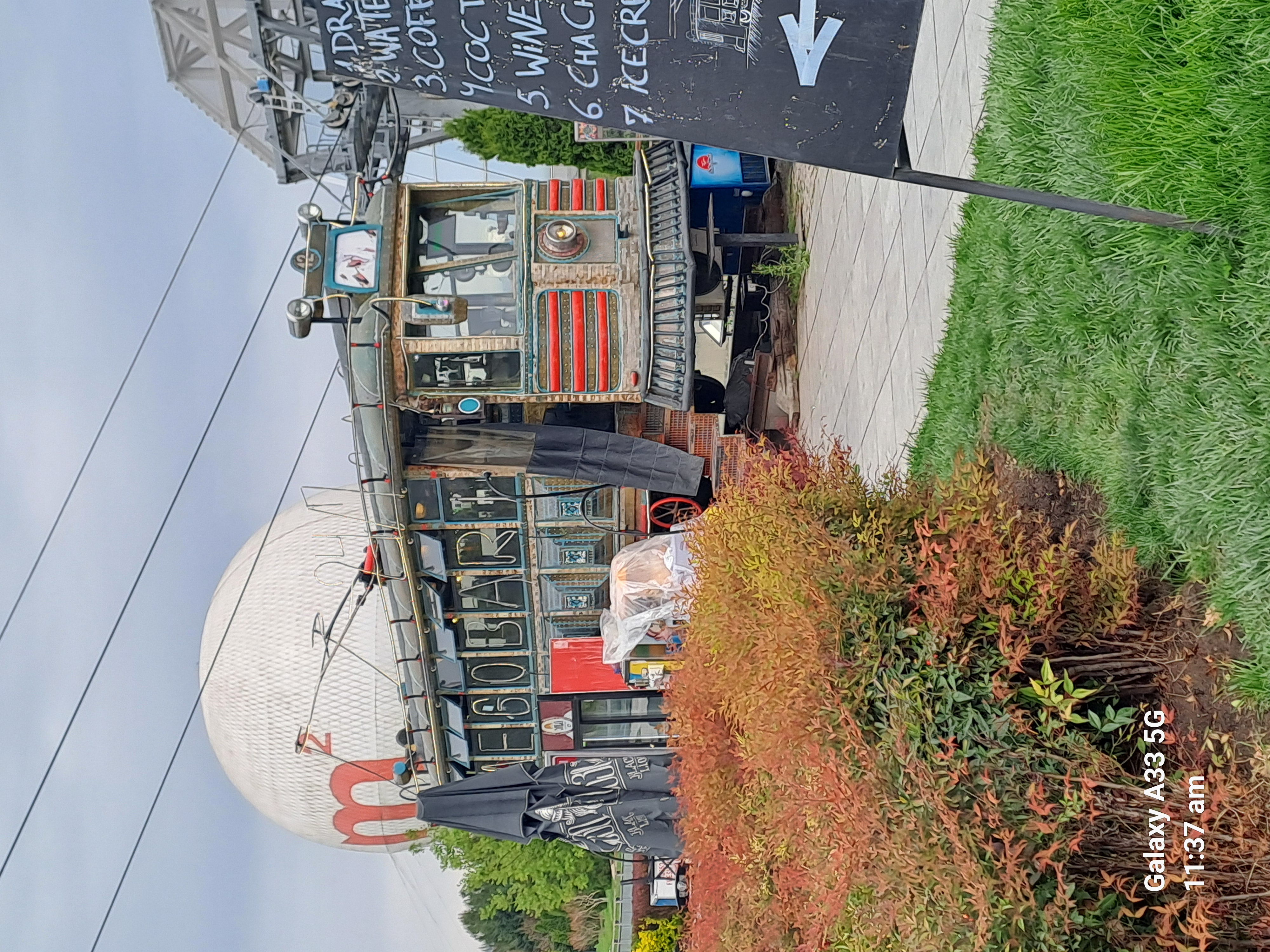

Less successful was our visit to the international fellowship which eluded us.
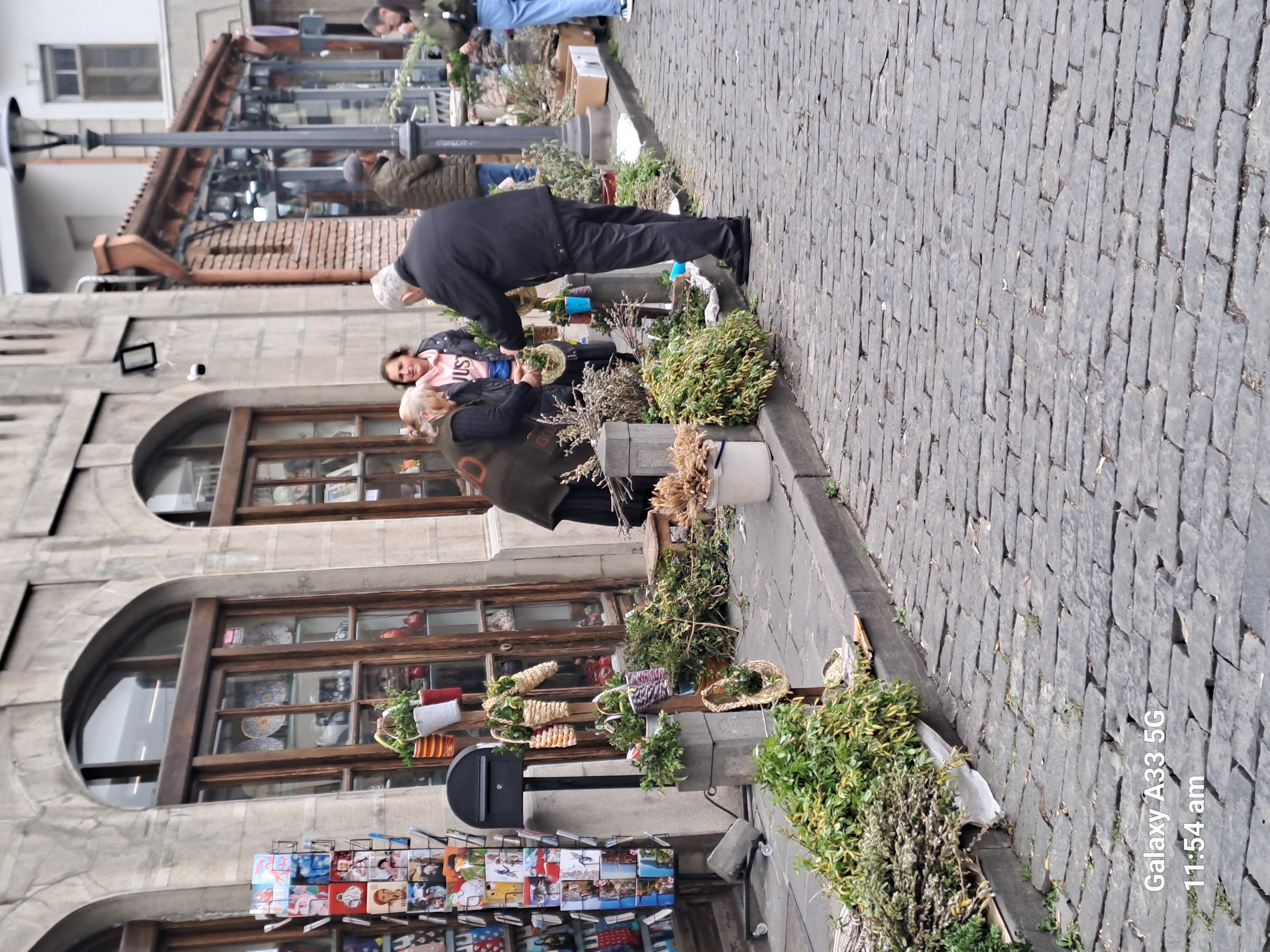
Palm Sunday greenery.
On the last day after everyone had gone to get their Iranian visas there was time for a trip to the baths for a treat.
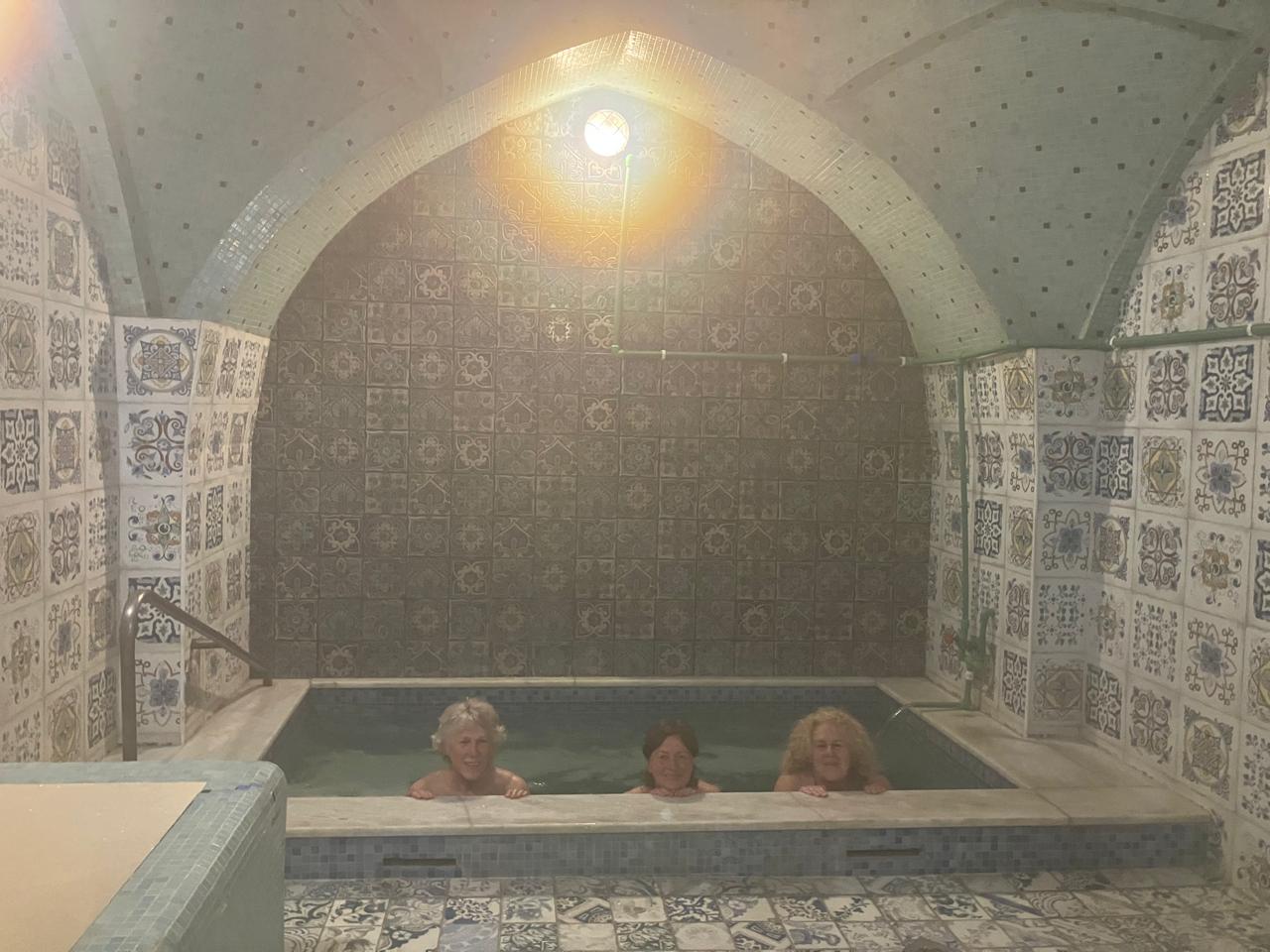
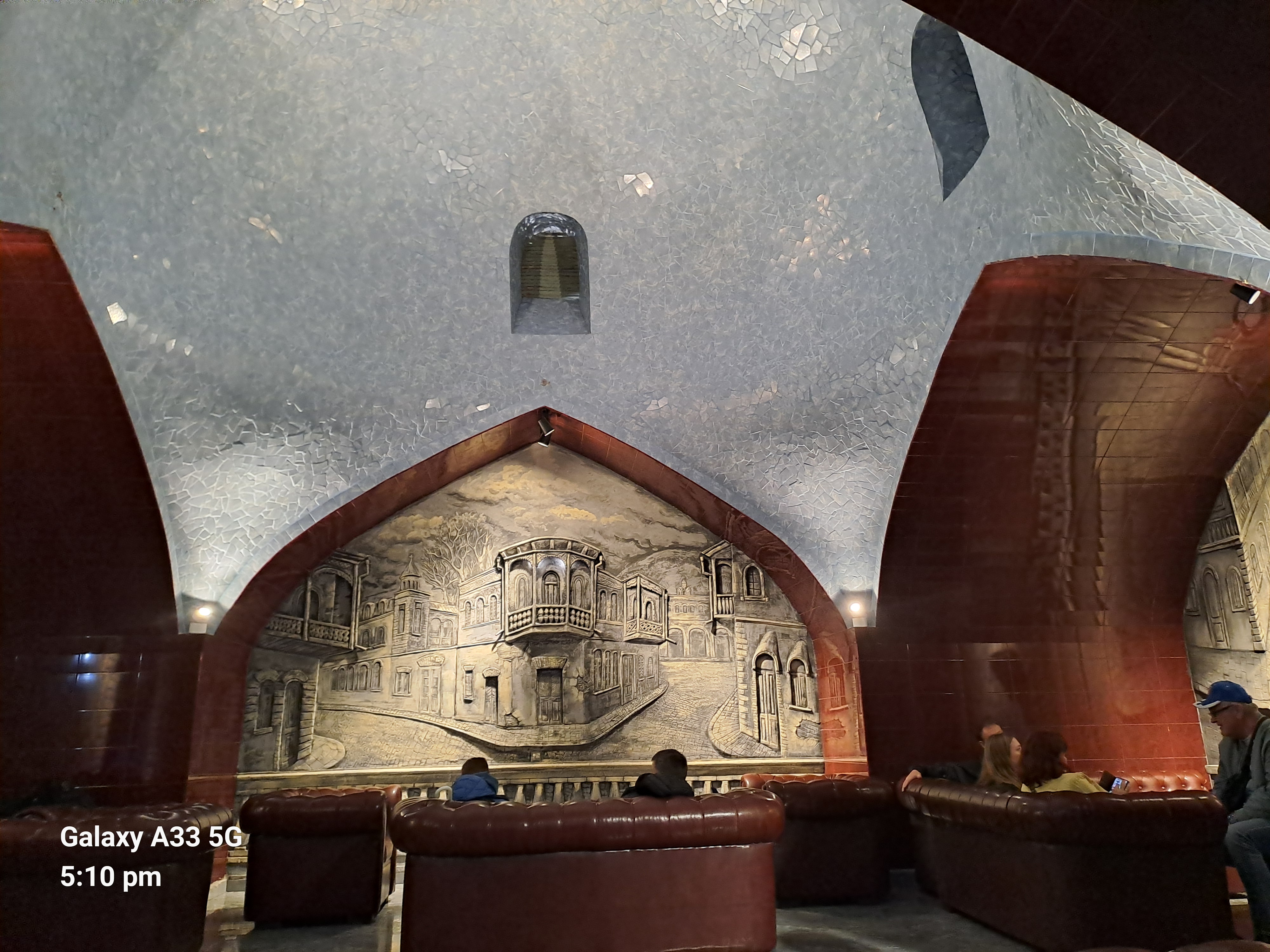
Hot and cold baths and an all over scrub. All ready for Armenia.